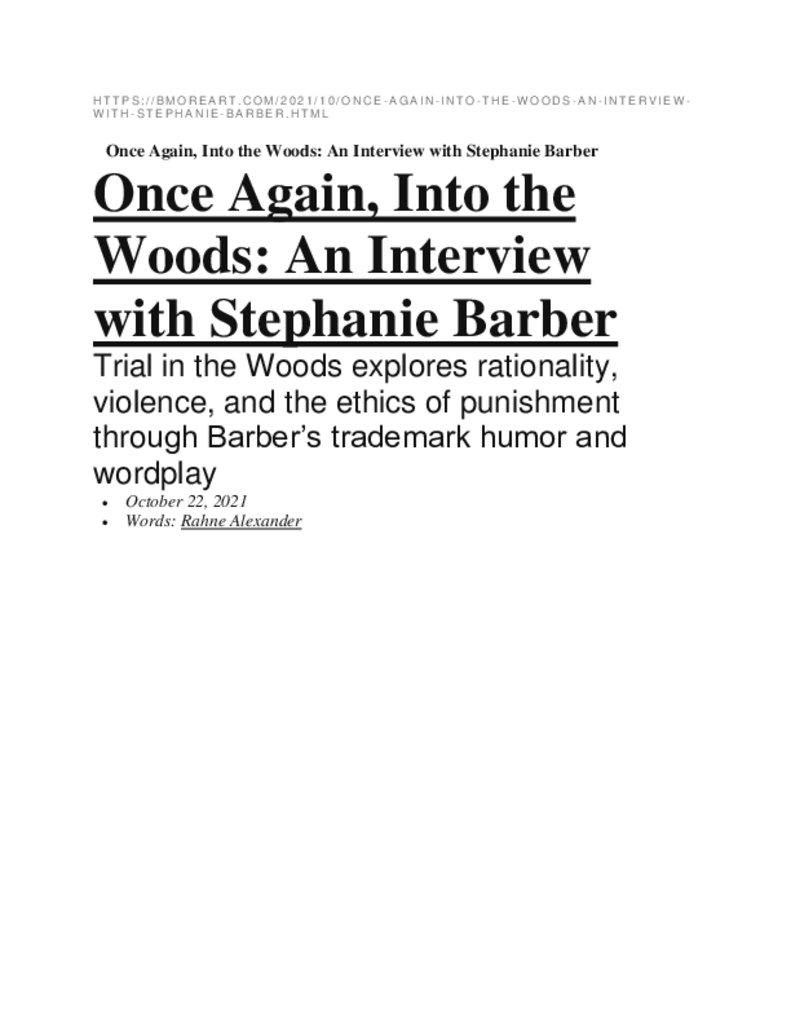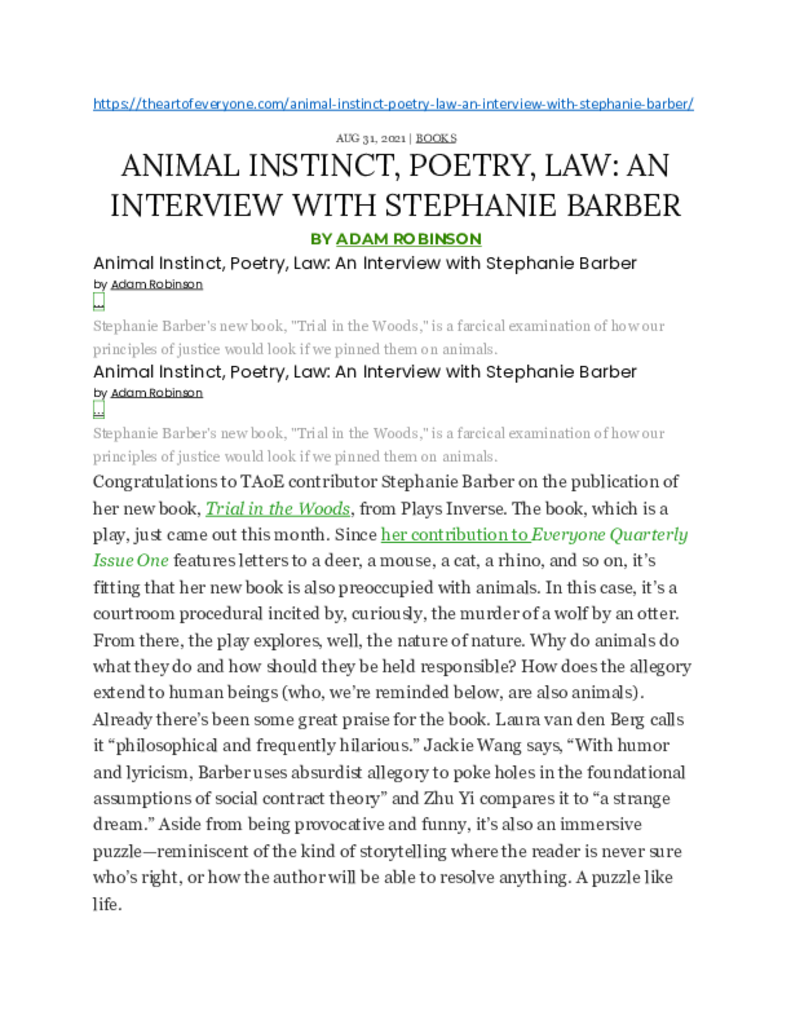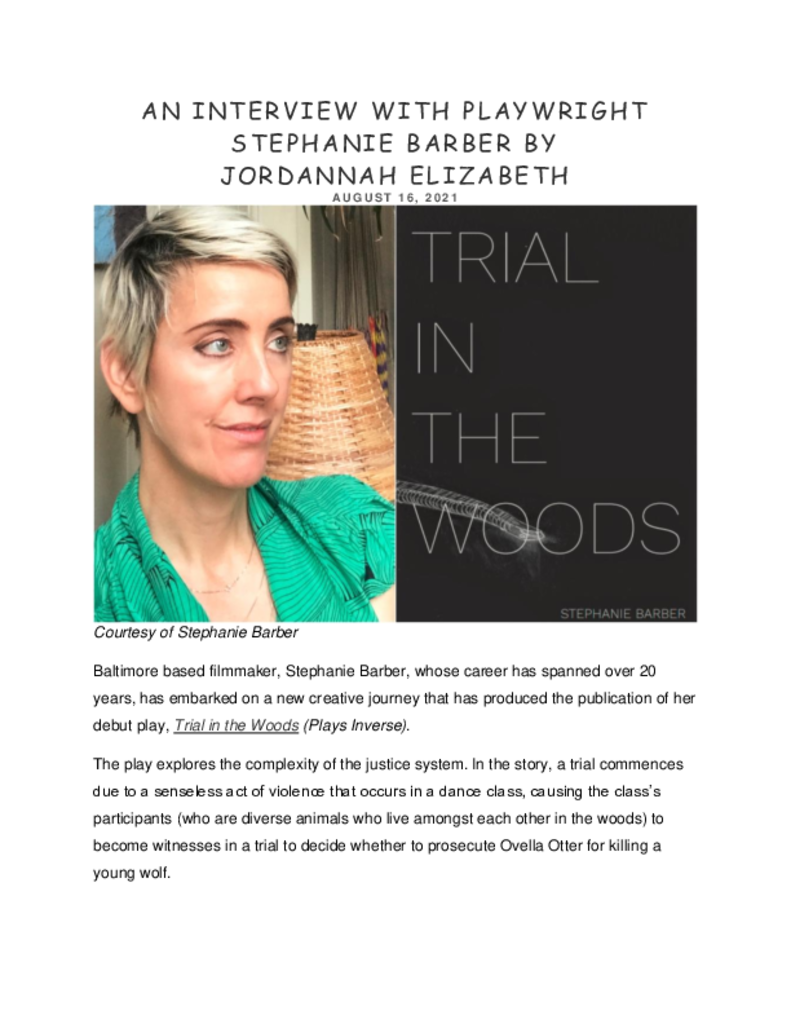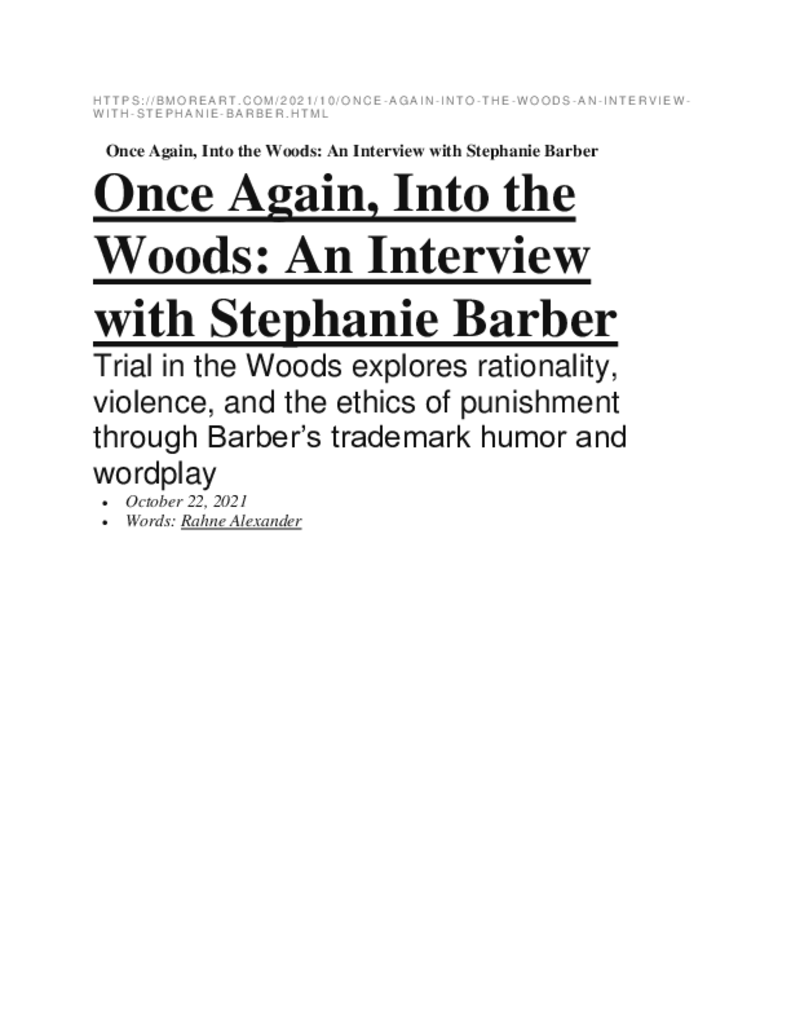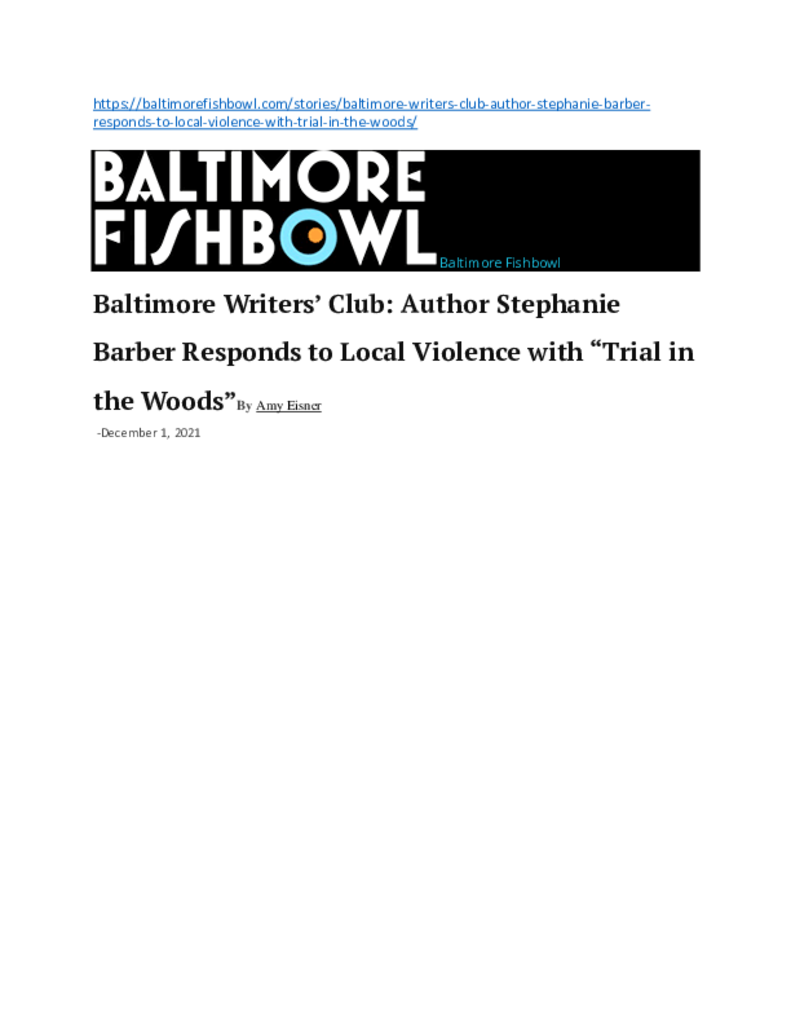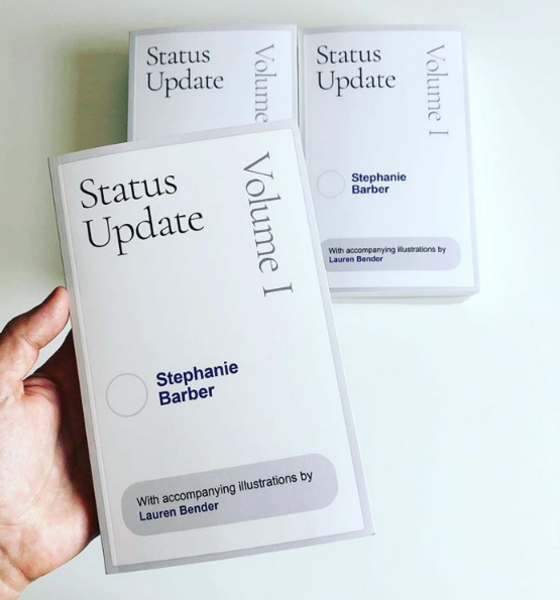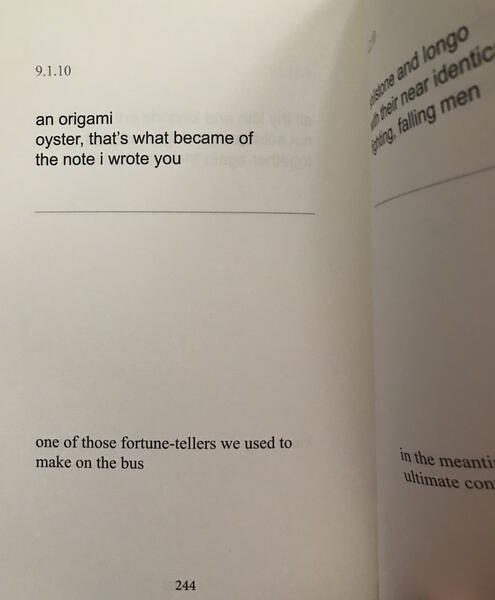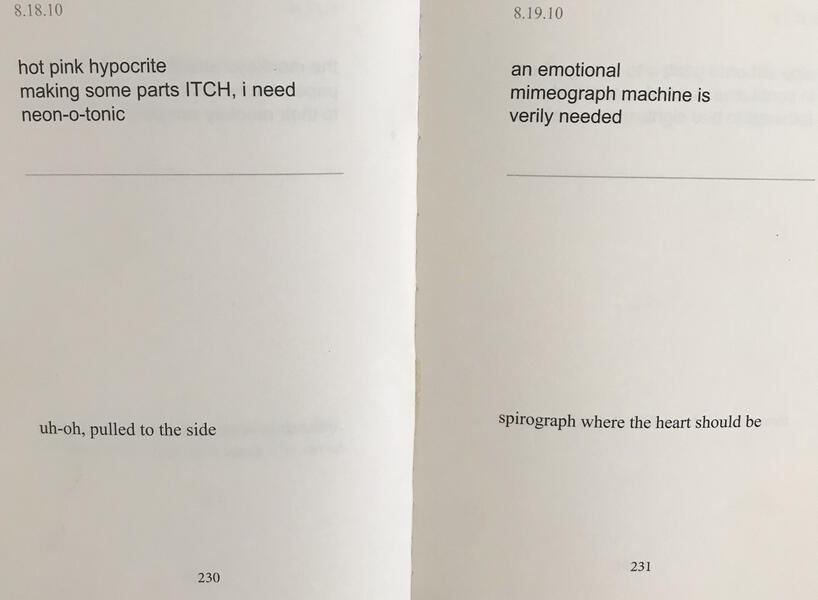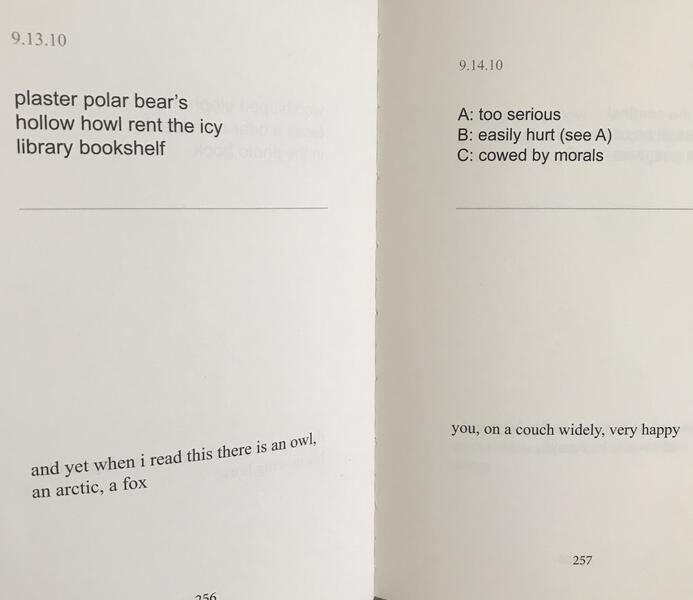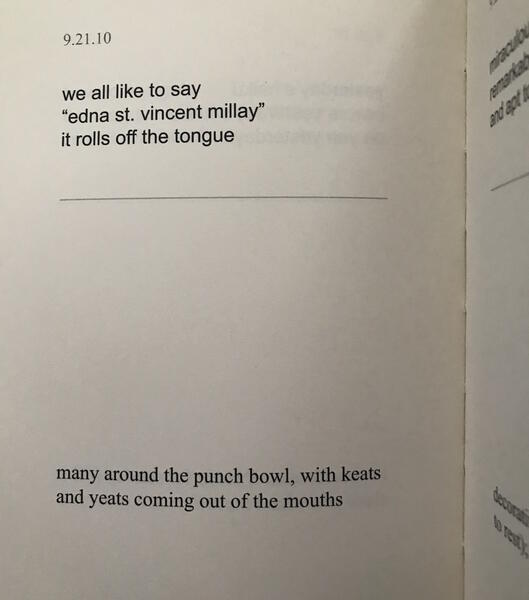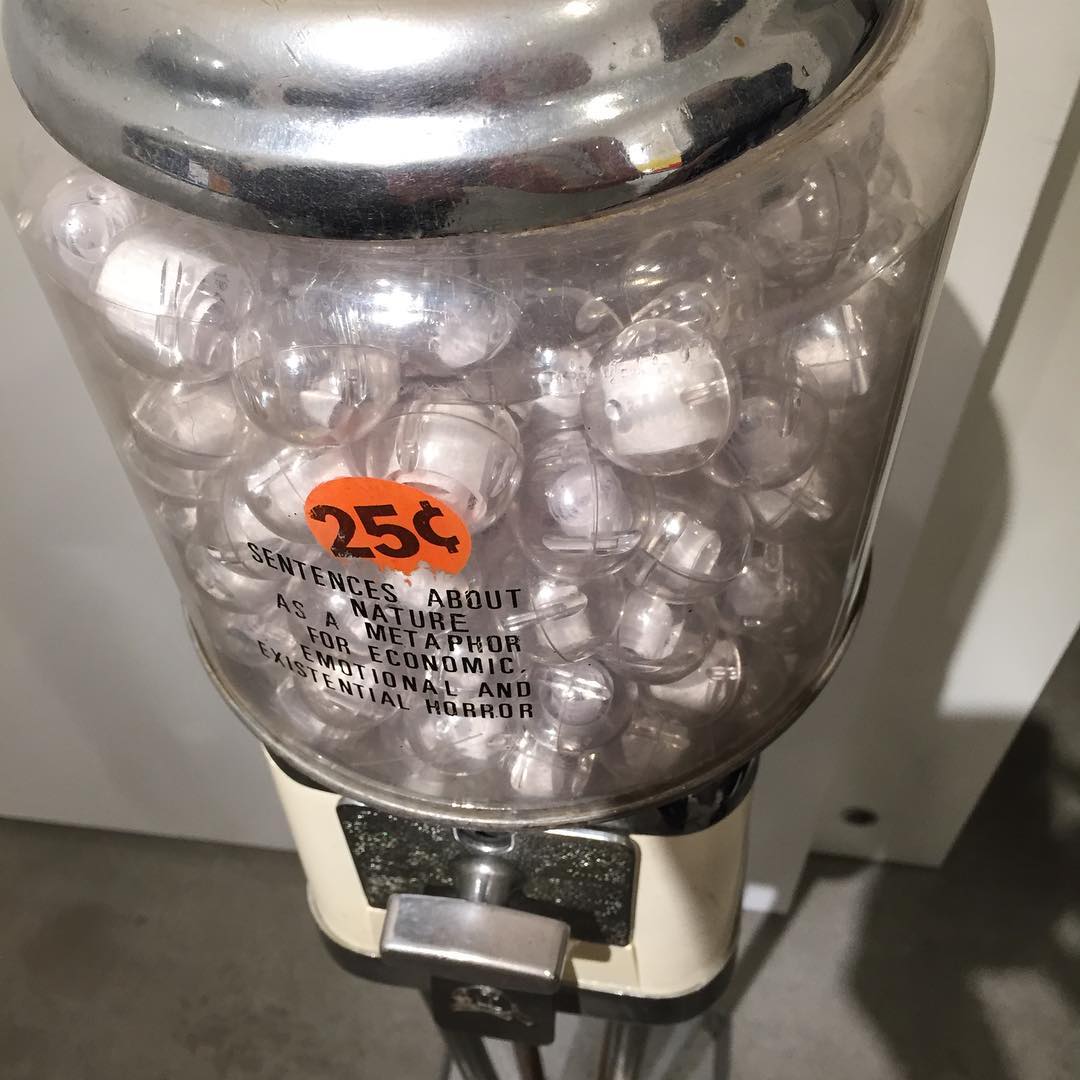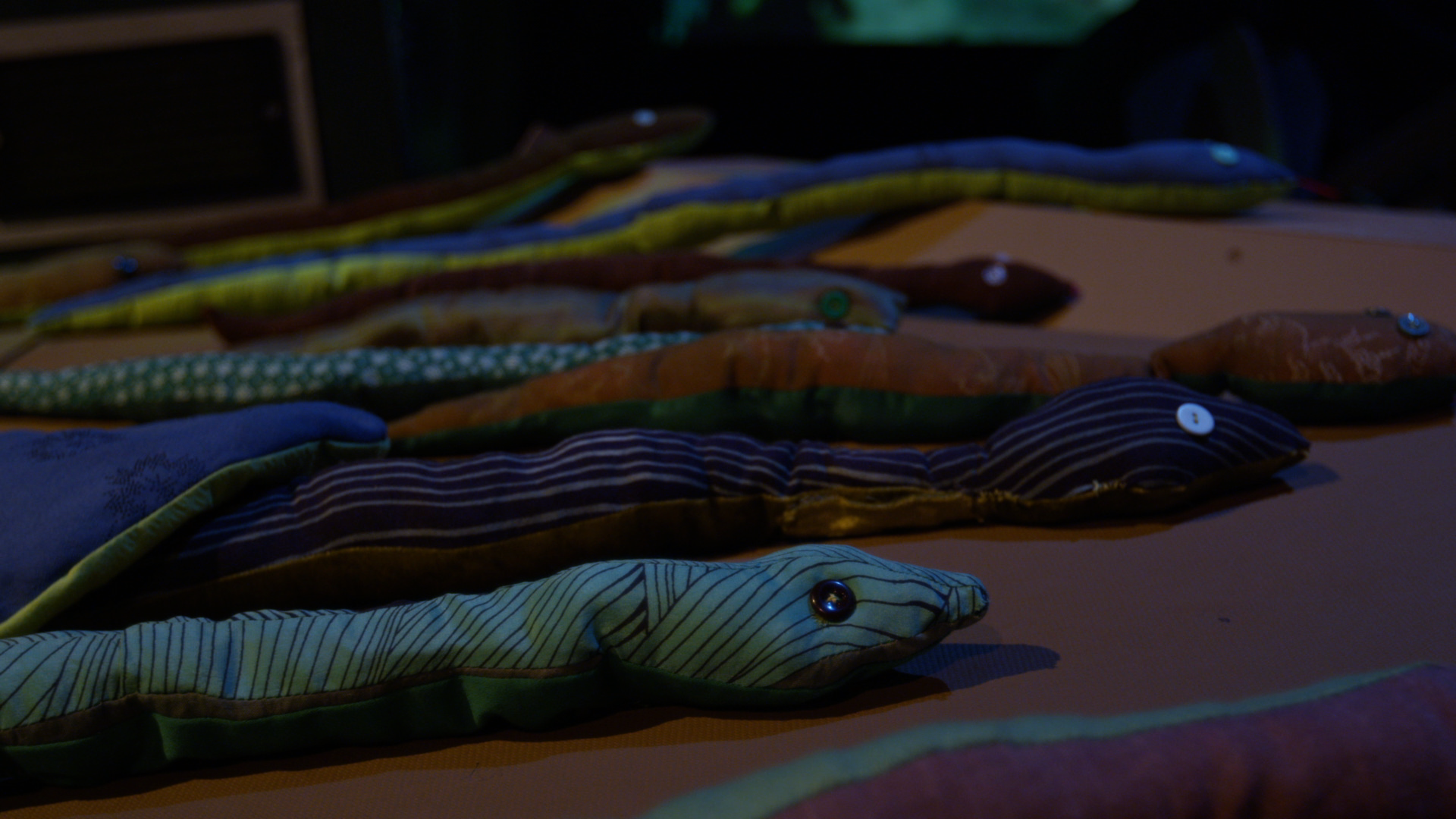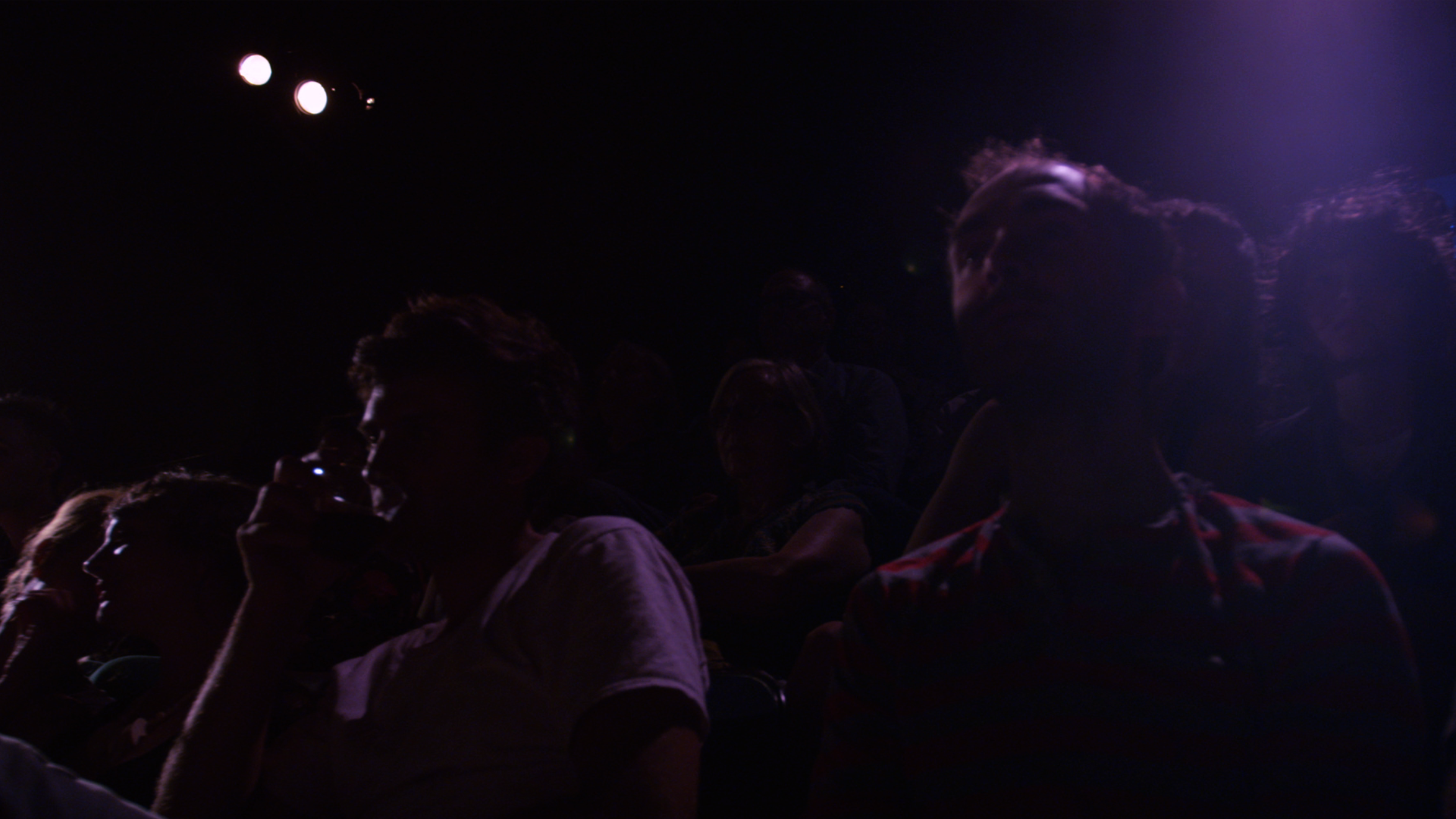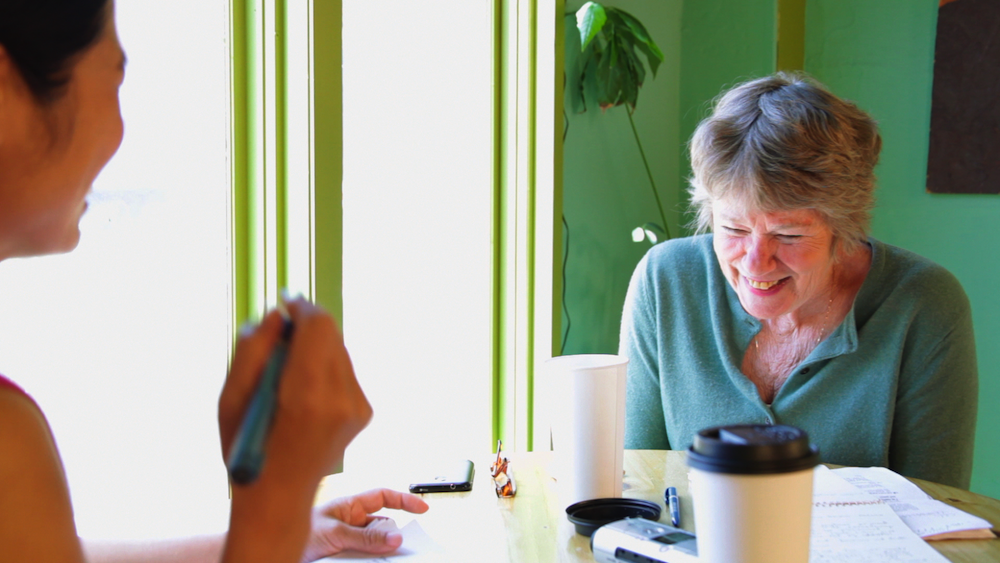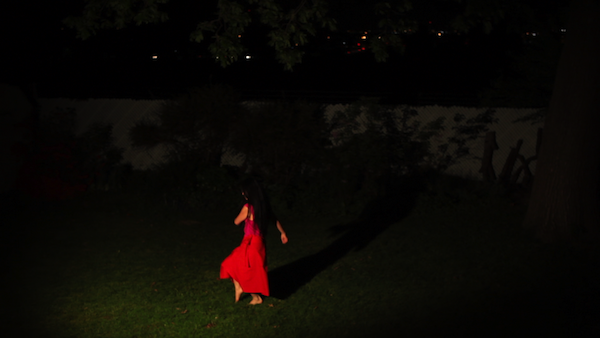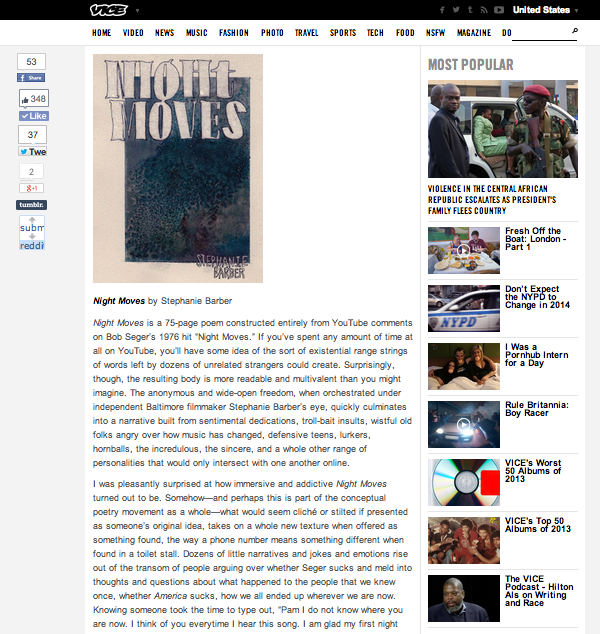Work samples
-
TRAILER In The Jungle Barber 2017Trailer for In The Jungle, 2017 feature film. A piece of expanded poetics which combines written and spoken text with music composed with the found and created sounds of birds and insects. The collision of human civilization and wildlife is both a contemplation of extinction and environmentalism as well as a metaphor for the wild in our psyches and imagination. Equal parts musical, performance, and poetic lecture, In The Jungle is an hour long, single channel video written and directed by Stephanie Barber, starring Cricket Arrison (of Wham City) and M.C. Schmidt (of Matmos) with sets designed by Smelling Salt Amusements and cinematography by Matthew Robert Thompson. In The Jungle, playfully and sorrowfully tells the tale of an unreliable narrator in a self imposed exile. Given a grant to study the equivalent of animal cries and whines in jungle flora our heroine has lived for 1, 612 days deep in an unnamed jungle.
-
short excerpt of the installation video Nature as Metaphor 2016This is a short excerpt of a looped meditation on the collision of human domestic spaces and wildlife embodied in the running tiger. This is an element of the first iteration of Nature as a Metaphor for Economic, Emotional and Existential Horror, presented in 2016 at the BMA. It is clear, the grace and beauty of the moving animal, fast and steady through the design magazine photographs. There is the stark relief of 'animal' against 'civilization'; the rush towards (or away?) from extinction; an implicit metaphor of class; the meditative suggestion of eternally running, moving, stepping through; the counterbalance of these pruned domestic spaces, so set and stable and fixed to the idea of actuality.
-
short excerpt from Another Horizon, 2020 16mm stephanie barberthis is a short excerpt of the 2020 9 minute 16mm film Another Horizon by Stephanie Barber I made a 36-foot scrolling collage of photographs of horizons (ripped from optimistic books and magazines.) I shot and processed the 16mm film and then scratched each frame with a razor along the horizon line. The tedium of the process a kind of joy and discovery. The soundtrack is also a manipulated collage of words and sounds. Here, the space between narrative and documentary, fact and fiction, is literally scratched between two voices, cleaved apart or brought beside. Jayne Love reads a text I wrote for her––short sentences on the concept of the horizon and the briefest suggestion of narrative collide with pieces of Richard (Oswan) Williams' beautiful, rum-fueled living room sermons to me as a young person. I lived, for a few months, in Richard, and his wife Mary’s, apartment, the site of their voodoo spiritual temple in New Orleans.
-
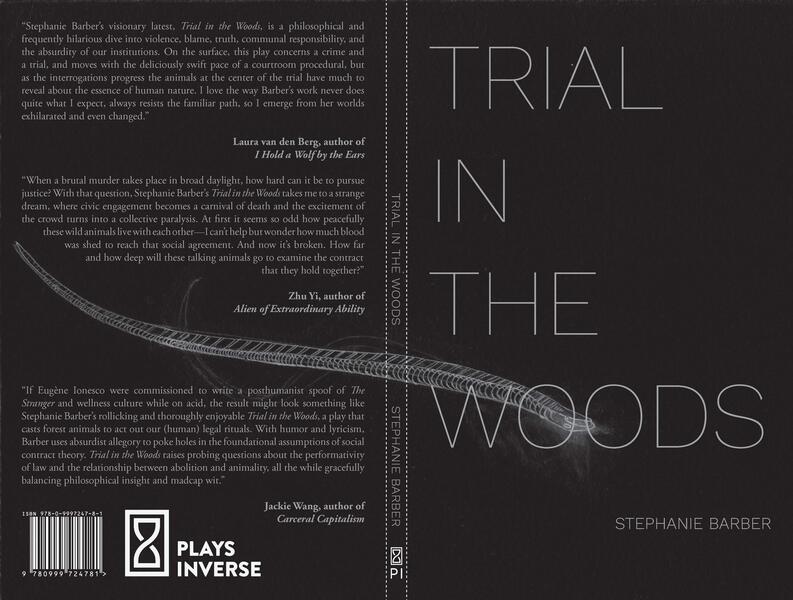 TRIAL_cover & blurbs. aug. 2021 jpg.jpgTrial in the Woods is a full length play published by Plays Inverse Press in August 2021. The play is an animal fable, a comedy and a serious contemplation of the American justice system. It is a critique of the prison industrial complex and punitive justice as well as a critique of the human colonization of the natural world. from the publisher Plays Inverse Press: On the morning of the 5th gibbous moon, Ovelia Otter attacks and kills Pennstin the young wolf at Bear Chondra's Mix Flow Get Up And Go exercise class. That same afternoon, Ovelia Otter is brought before a jury of her peers, Judge Bodon Boar presiding. Prosecutor Lynx believes she should be expelled from animal society immediately, while Defense Squirrel S. argues animal instinct ought not to be prosecuted at all. Witness after witness are called to the stand and the forest's animals hang on the trial's every word—most more interested in the spectacle than its outcome. One part crime procedural and one part fable, Stephanie Barber's Trial in the Woods is a bold new play about ethics, the efficacy of punitive justice, and our (human, American) criminal justice system. It's also very, very funny.
TRIAL_cover & blurbs. aug. 2021 jpg.jpgTrial in the Woods is a full length play published by Plays Inverse Press in August 2021. The play is an animal fable, a comedy and a serious contemplation of the American justice system. It is a critique of the prison industrial complex and punitive justice as well as a critique of the human colonization of the natural world. from the publisher Plays Inverse Press: On the morning of the 5th gibbous moon, Ovelia Otter attacks and kills Pennstin the young wolf at Bear Chondra's Mix Flow Get Up And Go exercise class. That same afternoon, Ovelia Otter is brought before a jury of her peers, Judge Bodon Boar presiding. Prosecutor Lynx believes she should be expelled from animal society immediately, while Defense Squirrel S. argues animal instinct ought not to be prosecuted at all. Witness after witness are called to the stand and the forest's animals hang on the trial's every word—most more interested in the spectacle than its outcome. One part crime procedural and one part fable, Stephanie Barber's Trial in the Woods is a bold new play about ethics, the efficacy of punitive justice, and our (human, American) criminal justice system. It's also very, very funny.
About stephanie
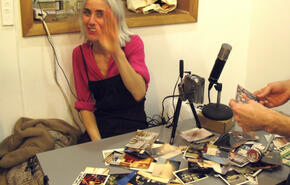
Barber’s films and videos have screened nationally and internationally… more
Trial in the Woods
from the publisher Plays Inverse Press:
On the morning of the 5th gibbous moon, Ovelia Otter attacks and kills Pennstin the young wolf at Bear Chondra's Mix Flow Get Up And Go exercise class. That same afternoon, Ovelia Otter is brought before a jury of her peers, Judge Bodon Boar presiding. Prosecutor Lynx believes she should be expelled from animal society immediately, while Defense Squirrel S. argues animal instinct ought not to be prosecuted at all. Witness after witness are called to the stand and the forest's animals hang on the trial's every word—most more interested in the spectacle than its outcome. One part crime procedural and one part fable, Stephanie Barber's Trial in the Woods is a bold new play about ethics, the efficacy of punitive justice, and our (human, American) criminal justice system. It's also very, very funny.
-
 TRIAL_cover & blurbs. aug. 2021 jpg.jpg
TRIAL_cover & blurbs. aug. 2021 jpg.jpg -
AN INTERVIEW WITH PLAYWRIGHT STEPHANIE BARBER BY JORDANNAH.pdfhttps://tersejournal.com/2021/08/16/an-interview-with-playwright-stephanie-barber-by-jordannah-elizabeth/ AN INTERVIEW WITH PLAYWRIGHT STEPHANIE BARBER BY JORDANNAH ELIZABETH AUGUST 16, 2021 Courtesy of Stephanie Barber Baltimore based filmmaker, Stephanie Barber, whose career has spanned over 20 years, has embarked on a new creative journey that has produced the publication of her debut play, Trial in the Woods (Plays Inverse). The play explores the complexity of the justice system.
Another Horizon 2020 16mm film
The soundtrack is also a manipulated collage of words and sounds. Here, the space between narrative and documentary, fact and fiction, is literally scratched between two voices, cleaved apart or brought beside. Jayne Love reads a text I wrote for her––short sentences on the concept of the horizon and the briefest suggestion of narrative collide with pieces of Richard (Oswan) Williams' beautiful, rum-fueled living room sermons to me as a young person.
When I was 20 I lived, for a few months, in Richard, and his wife Mary’s, apartment, the site of their voodoo spiritual temple in New Orleans. Of course, as priests and priestesses, Richard and Mary spoke often of death, transcendence, ethics and health. Our days were slow and filled with philosophical rumination. I recorded most everything on cassette tapes back then and some of those have made it here to the present. To this horizon we’re at now.
The horizon, where the sky and the earth meet, is always elsewhere, a promised place where these two elements come together. A metaphor, an orienting, a promise of transition, change, transcendence. A place where the corporeal and spiritual meet, or are cleaved apart.
Another Horizon has screened (or will screen) at the following festivals this year:
nothingtoseeness Akadamie der Künst, Berlin; seen only, heard only through someone else’s description McEvoy Foundation for the Arts, CA; Light Matter Film Festival, Alfred NY; ANALOGICA '21; Against Nature Revolutions Per Minute, Boston; Athens International Film and Video Festival; MurMurs at REDCAT, LA; Muscle Definition, CPM Gallery, MD; Museum of the Moving Image, NYC; Bideodromo Bilbao Arte; Process 2021, Riga; Golden Ger Film Festival; Onion City Film Festival; Maryland Film Festival; 33 Filmfest Dresden; Cineteca Madrid; Ann Arbor Film Festival; Brussels Independent Film Festival, 2021; ICDOCS, 2021; International Kansk; Kinoskop, Belgrade
-
short excerpt from Another Horizon, 2020 16mm stephanie barberthis is a short excerpt of the 2020 9 minute 16mm film Another Horizon by Stephanie Barber I made a 36-foot scrolling collage of photographs of horizons (ripped from optimistic books and magazines.) I shot and processed the 16mm film and then scratched each frame with a razor along the horizon line. The tedium of the process a kind of joy and discovery. The soundtrack is also a manipulated collage of words and sounds. Here, the space between narrative and documentary, fact and fiction, is literally scratched between two voices, cleaved apart or brought beside. Jayne Love reads a text I wrote for her––short sentences on the concept of the horizon and the briefest suggestion of narrative collide with pieces of Richard (Oswan) Williams' beautiful, rum-fueled living room sermons to me as a young person. I lived, for a few months, in Richard, and his wife Mary’s, apartment, the site of their voodoo spiritual temple in New Orleans.
-
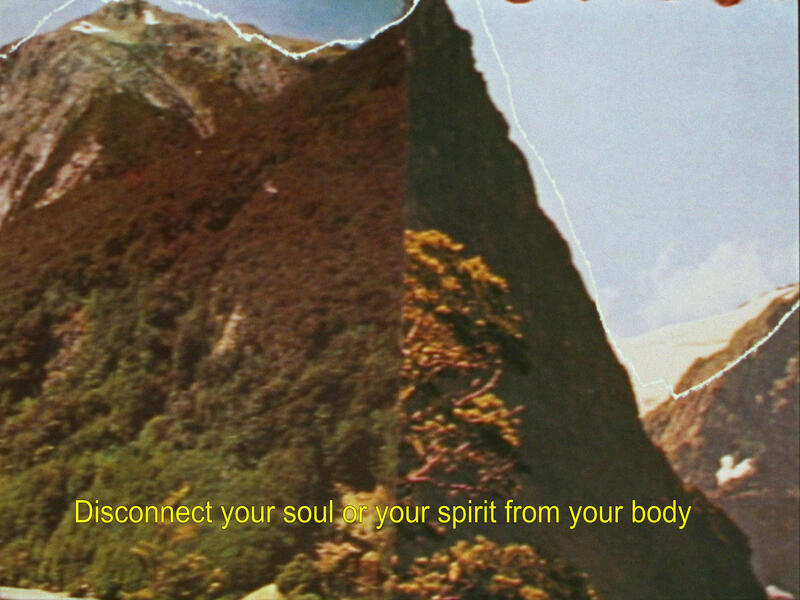 another horizon still disconnect your soul.jpgA still from the 2020 16mm film Another Horizon. Richard (Oswan) Williams speaking about death.
another horizon still disconnect your soul.jpgA still from the 2020 16mm film Another Horizon. Richard (Oswan) Williams speaking about death. -
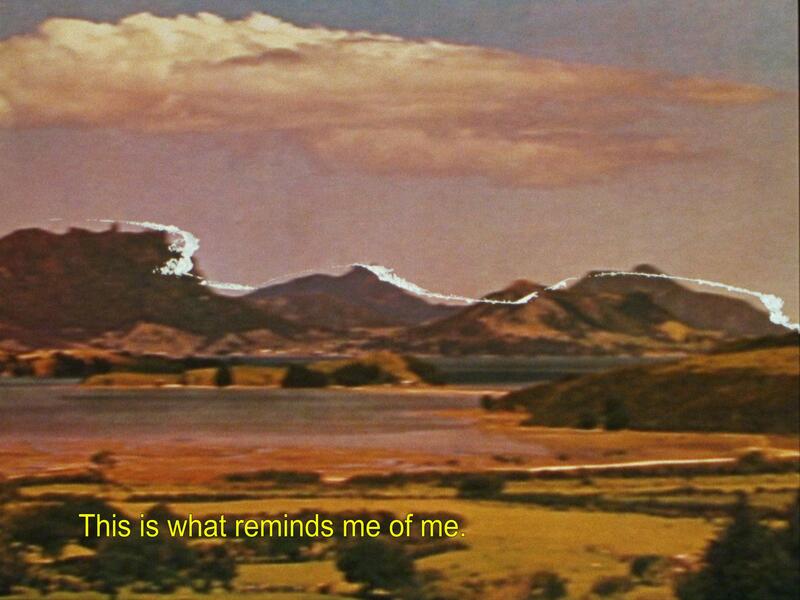 another horizon still reminds me of me.jpgThe space between the sky and the land, the spiritual and the material, is cleaved apart, the line between the two is literally scratched into the films emulsion.
another horizon still reminds me of me.jpgThe space between the sky and the land, the spiritual and the material, is cleaved apart, the line between the two is literally scratched into the films emulsion. -
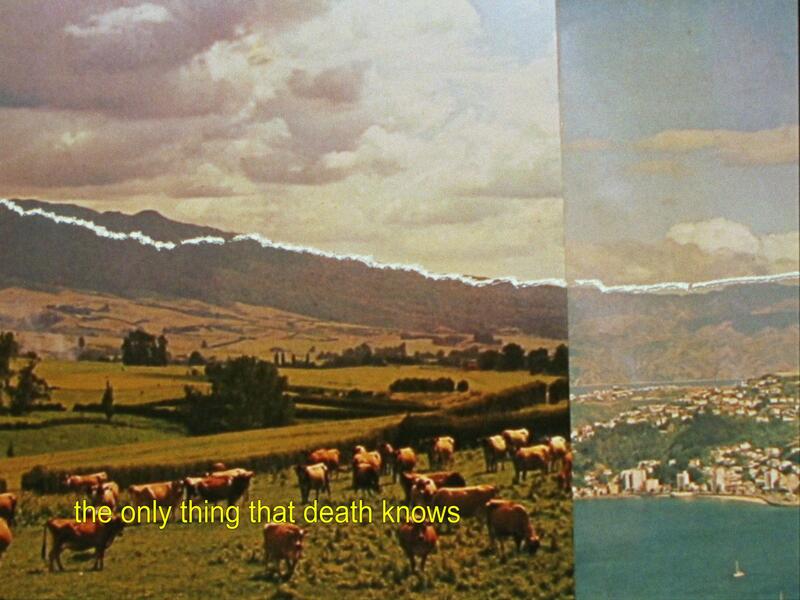 another horizon still the only thing that death knows.jpgAs with much of my work I am interested in contemplating the very large ideas of mortality and what it means to live a life while contrasting the weight of that idea. These contrasting aesthetics, Richard's liberal use of profanities which literally dis-guise the depth, power and wisdom of his words, has always been a guiding principle in my work. The avoidance of handling a huge idea with kit gloves. The approach makes for a more complex product which assumes a brilliant and intellectually flexible viewer.
another horizon still the only thing that death knows.jpgAs with much of my work I am interested in contemplating the very large ideas of mortality and what it means to live a life while contrasting the weight of that idea. These contrasting aesthetics, Richard's liberal use of profanities which literally dis-guise the depth, power and wisdom of his words, has always been a guiding principle in my work. The avoidance of handling a huge idea with kit gloves. The approach makes for a more complex product which assumes a brilliant and intellectually flexible viewer. -
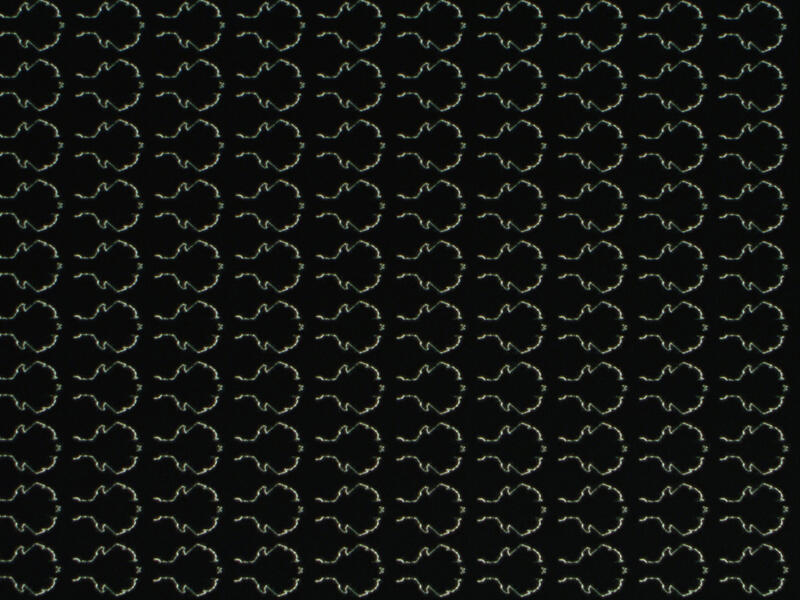 ANOTHER HORIZON still 10 smaller.jpgA still from the meditation scene in Another Horizon. The scratched lines begin to move into an graphic animation.
ANOTHER HORIZON still 10 smaller.jpgA still from the meditation scene in Another Horizon. The scratched lines begin to move into an graphic animation. -
another horizon scratch 1.JPGHand scratching the negative
-
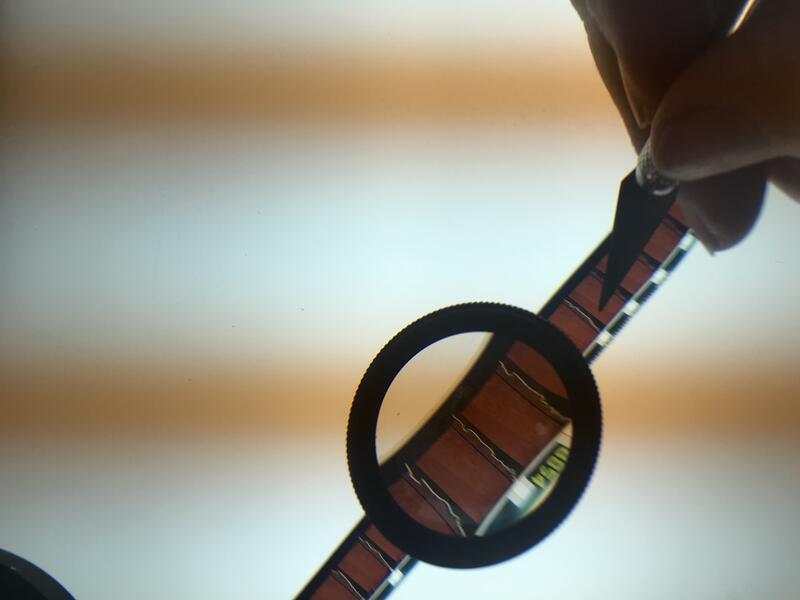 another horizon scratch 2.jpgMore scratching. 12,960 frames in 9 minutes of 16mm film.
another horizon scratch 2.jpgMore scratching. 12,960 frames in 9 minutes of 16mm film.
Status Update Vol. 1 2019
In 2019 the press Ctrl+P published this first year of haiku and their accompanying drawings.
FROM Ctrl+P:
Stephanie Barber has been posting haiku to her Facebook page every day since 2010. Status Update Volume I is a catalog of that first year, at once quotidian and monumental. Archived in the endless scroll of Facebook’s feed, here they are extracted from the jumble of news articles, events, and comments and available to the public for the first time. Each haiku has been paired with an illustration by Lauren Bender, which are not illustrations at all, but rather descriptions of drawings she would do if she were to illustrate each haiku. As the cultural role of Facebook ebbs and flows, Barber persistently responds to the platform’s incessant query, “What’s on your mind?”
Ctrl+P is a curatorial + publishing project dedicated to preserving ephemeral + poetic interventions in the digital realm. It is a platform for thinking + a chance to collaborate with artists + writers.
Oh My Homeland 2019
In 1985 the great soprano Leontyne Price sung the title role in Verdi’s Aida as her farewell opera. After the ‘O patria mia’ aria, the audience breaks into a four-minute applause. 'Oh My Homeland' is the third in a series of minimal single shot 16mm films I’m currently building. It’s a film about representation, art, and material exchange. It’s a film about endings. It’s a film about identity, love, power, patriotism and the transcendent potential of art through the viewing of a face receiving adoration. A minimal gesture akin to the practice every portrait painter or mother recognizes as ineffably powerful.
It is essentially a readymade and like my book 'Night Moves' and my video "Tatum's Ghost" it continues to explore YouTube as a cultural and social archive.
Oh My Homeland, while being simply a shot of Ms. Price’s face as she receives the applause and before returning to the role, expands with the unaltered meditation on the shot. The transformational power of art for society and the maker alike; the implication of Ms. Price’s race and the context to which she dedicated her life; the staggering political implications of the Verdi aria (a mournful and complicated love letter to Aida’s homeland) in a time in which love of (my) country is hard to muster.
Since its release in August of 2019, Oh My Homeland has screened at BFI London Film Festival; UK Split Film Festival, Croatia; IndieCork, Ireland and Swedenborg Film Festival, London, UK (where it was awarded an honorable mention) New Orleans Film Festival, Milwaukee Underground (where it won first prize) Big Muddy and CUFF 27; Girona Film Festival; Crossroads 2020 San Francisco CA; MUFF 2020; Golden Ger International Film Festival, 2020; AIFVF 2020; Iowa City DOCS International 2020; Light Field 2020; Cosmic Rays Film Festival; Saigon Experimental Film Collective; Manchester International Film Festival; Big Muddy Film Festival; Atlanta Film Festival; BFI London Film Festival; RPM 2020, Boston MA; Swedenborg Film Festival, London; Particle & Wave Media Arts Festival, Alberta CA; Split Film Festival; IndieCork; Barcelona Short Film Festival, Spain; New Orleans Film Festival; ULTRAcinema Festival MX, Mexico; San Francisco Cinematheque at the San Francisco Art Book Fair
Nature as a Metaphor for Economic, Emotional and Existential Horror 2018
A collection of photographs and language compose an expanded text piece that considers human’s press against (or alienation from?) the natural world,
An installation utilizing words as sculptural elements to contemplate the morphological state of language and nature through a variety of lenses (existential, economic, emotional.)
The installations consist of a series of large format photo prints with texts created by hand pressed dry transfer letters; sculpturally constructed frames with inlaid shelves for smaller photo prints with further hand lettered texts; a vending machine with 300 sentences about the nature of economic, emotional and existential horror; 3 viewfinder essays with images and text; acetate scrolls and a single channel video.
The show is a hybridized essay using photography and text to investigate our understanding of nature as human context.
-
Nature as a Metaphor for Economic, Emotional and Existential HorrorAn installation shot at Capsule NYC. Small, hand lettered photographs lean against the large format prints with custom made, shelved frames.
-
Nature as a Metaphor for Economic, Emotional and Existential Horror 2An installation shot at Capsule NYC. Small, hand lettered photographs lean against the large format prints with custom made, shelved frames.
-
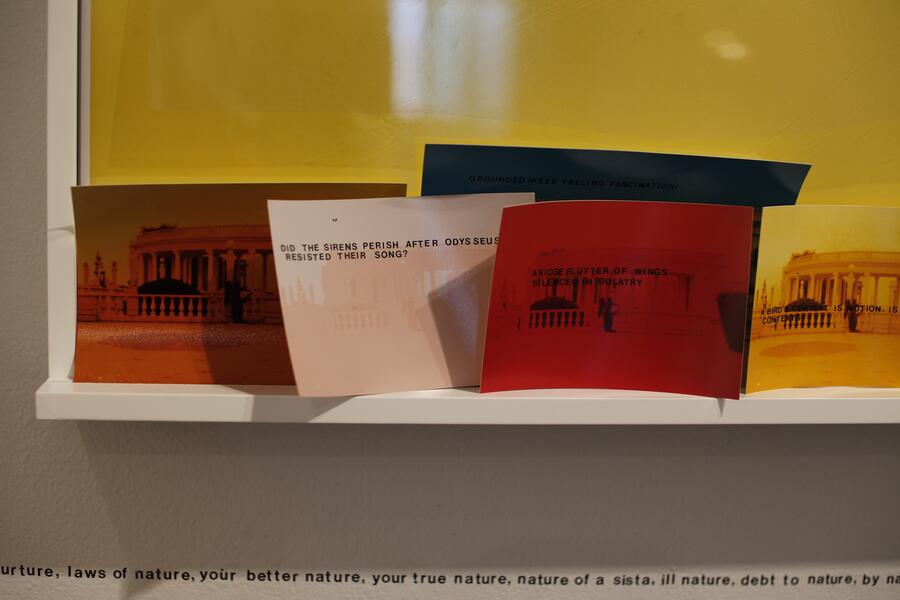 Nature as a Metaphor for Economic, Emotional and Existential Horror 3A close up of an installation shot at School 33 Art Center, Baltimore MD hand lettered photographs lean against the large format prints with custom made, shelved frames. Text along the wall continues a list of ways we use the word nature.
Nature as a Metaphor for Economic, Emotional and Existential Horror 3A close up of an installation shot at School 33 Art Center, Baltimore MD hand lettered photographs lean against the large format prints with custom made, shelved frames. Text along the wall continues a list of ways we use the word nature. -
 Sentences About Nature as a Metaphor for Economic, Emotional and Existential HorrorA vending machine full of 300 Sentences About Nature as a Metaphor for Economic, Emotional and Existential Horror. Visitors can buy one or more sentences for 25 cents. Again, the language is the primary aesthetic and conceptual element of this project.
Sentences About Nature as a Metaphor for Economic, Emotional and Existential HorrorA vending machine full of 300 Sentences About Nature as a Metaphor for Economic, Emotional and Existential Horror. Visitors can buy one or more sentences for 25 cents. Again, the language is the primary aesthetic and conceptual element of this project. -
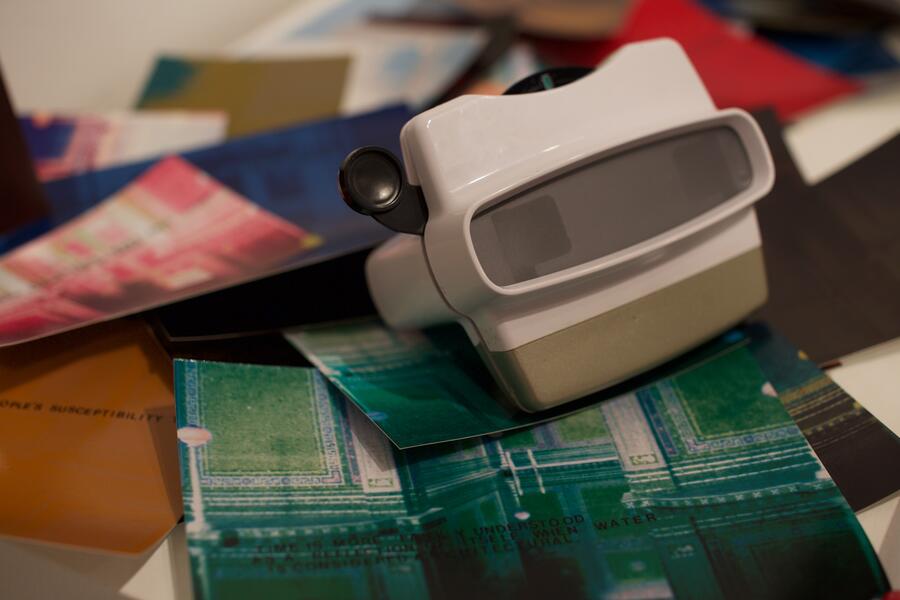 Nature as a Metaphor for Economic, Emotional and Existential Horror 6A viewfinder essay sits amid hand lettered 4 x 6 hand lettered images at the installation at School 33, Baltimore.
Nature as a Metaphor for Economic, Emotional and Existential Horror 6A viewfinder essay sits amid hand lettered 4 x 6 hand lettered images at the installation at School 33, Baltimore. -
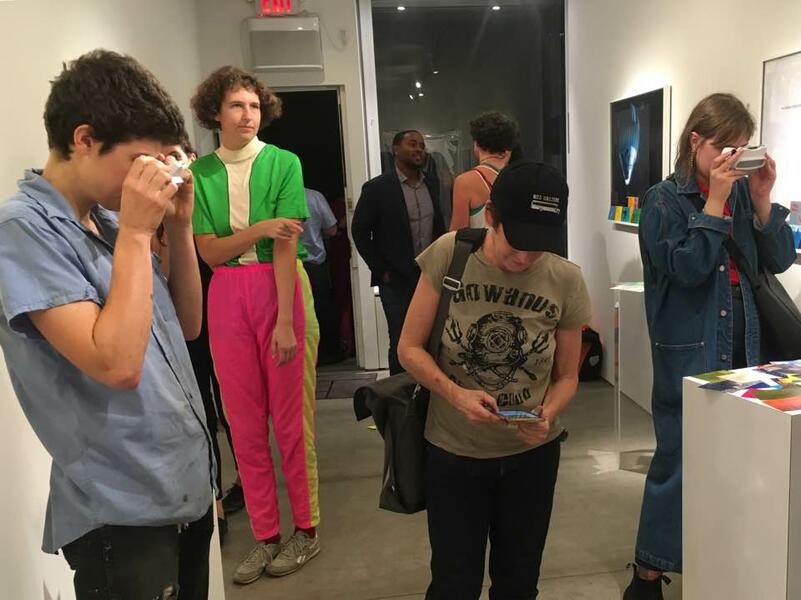 Nature as a Metaphor for Economic, Emotional and Existential Horror 5This is gallery shot at Capsule NYC shows visitors reading the 3d viewfinder essays.
Nature as a Metaphor for Economic, Emotional and Existential Horror 5This is gallery shot at Capsule NYC shows visitors reading the 3d viewfinder essays. -
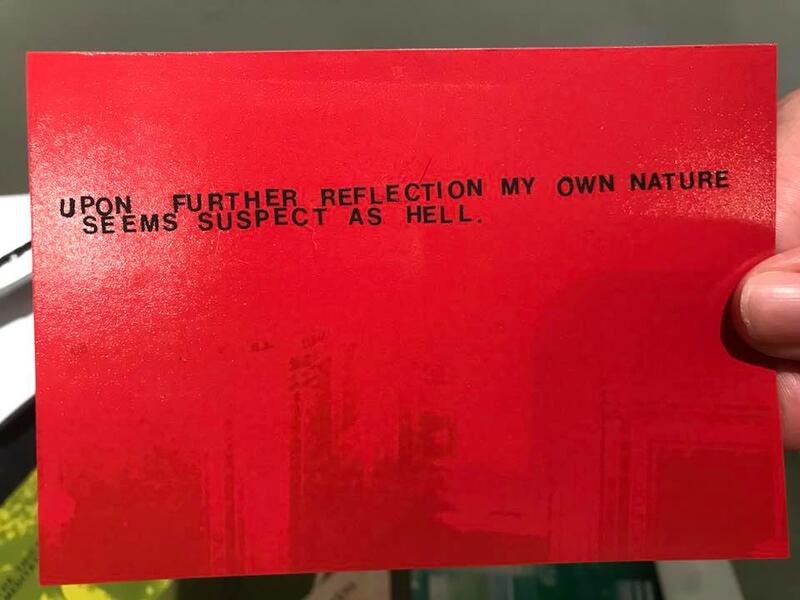 Nature as a Metaphor for Economic, Emotional and Existential Horror 7 hhHand lettered 4x6 still images move through poetic and philosophical grapplings with the concept of nature. The importance of word choice and conceptual play in the language usage is the primary compositional element of this project. Like a book, torn apart and scattered around a room, the ideas become modular and accumulate through time spent reading.
Nature as a Metaphor for Economic, Emotional and Existential Horror 7 hhHand lettered 4x6 still images move through poetic and philosophical grapplings with the concept of nature. The importance of word choice and conceptual play in the language usage is the primary compositional element of this project. Like a book, torn apart and scattered around a room, the ideas become modular and accumulate through time spent reading. -
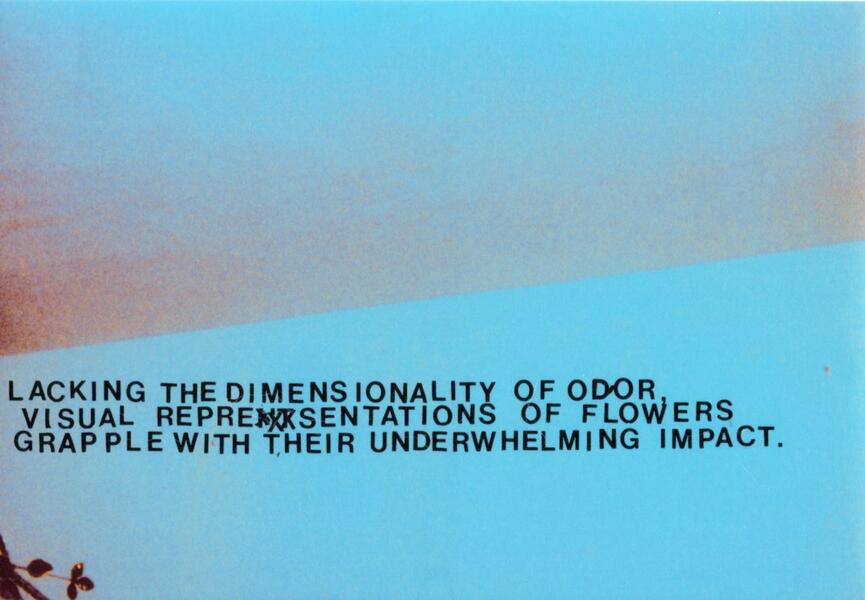 Nature as a Metaphor for Economic, Emotional and Existential Horror 8Hand lettered 4x6 still images move through poetic and philosophical grapplings with the concept of nature. The importance of word choice and conceptual play in the language usage is the primary compositional element of this project. Like a book, torn apart and scattered around a room, the ideas become modular and accumulate through time spent reading.
Nature as a Metaphor for Economic, Emotional and Existential Horror 8Hand lettered 4x6 still images move through poetic and philosophical grapplings with the concept of nature. The importance of word choice and conceptual play in the language usage is the primary compositional element of this project. Like a book, torn apart and scattered around a room, the ideas become modular and accumulate through time spent reading. -
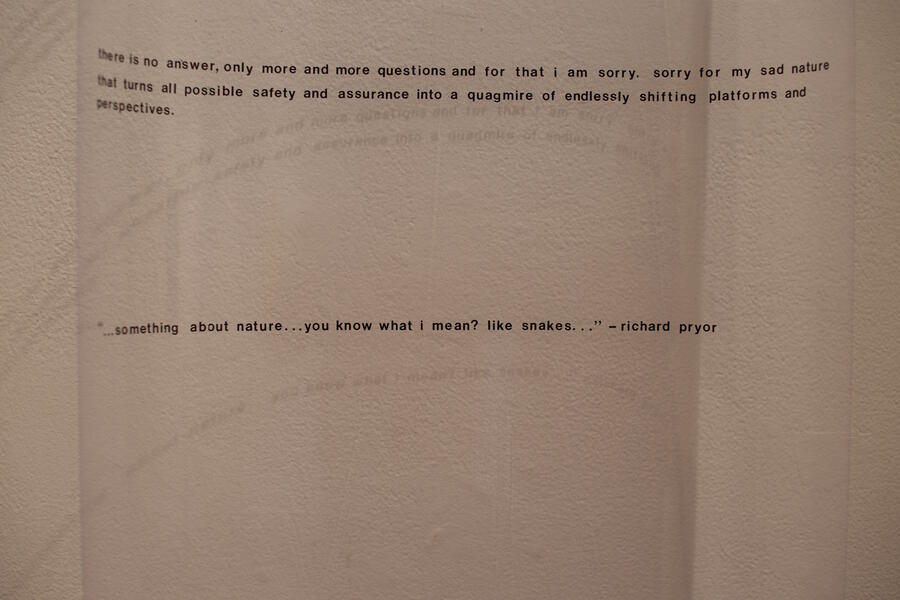 hand lettered, acetate scroll at school 33; nature as a metaphor for economic, emotional and existential horrorNature as a Metaphor for Economic, Emotional and Existential Horror presents a poetic, philosophical treatise on the way humans use and understand the concept of 'nature'. Language is used as a conceptual and visual element of the compositions. The hand lettered scrolls echo and summarize the thoughts and questions presented on the still photographs and serve as aesthetic contemplations on our human context.
hand lettered, acetate scroll at school 33; nature as a metaphor for economic, emotional and existential horrorNature as a Metaphor for Economic, Emotional and Existential Horror presents a poetic, philosophical treatise on the way humans use and understand the concept of 'nature'. Language is used as a conceptual and visual element of the compositions. The hand lettered scrolls echo and summarize the thoughts and questions presented on the still photographs and serve as aesthetic contemplations on our human context. -
excerpt nature as metaphorThis is a short excerpt of a looped meditation on the collision of human domestic spaces with wildlife embodied in the running tiger. This is an element of the first iteration of Nature as a Metaphor for Economic, Emotional and Existential Horror, presented in 2016 at the BMA. It is clear, the grace and beauty of the moving animal, fast and steady through the design magazine photographs. There is the stark relief of 'animal' against 'civilization'; the rush towards (or away?) from extinction; an implicit metaphor of class; the meditative suggestion of eternally running, moving, stepping through; the counterbalance of these pruned domestic spaces, so set and stable and fixed to the idea of actuality.
In The Jungle 2017
A feature length narrative written and directed by Stephanie Barber in 2017.
The musical essay film In The Jungle is an hour long, single channel video written and directed by Stephanie Barber, starring Cricket Arrison (of Wham City) and M.C. Schmidt (of Matmos) as well as a spate of snakes and tigers.
Leo Goldsmith at The Village Voice wrote "...Barber’s overabundance of language and logos — her insistence on the artificiality and constructedness of the Scientist’s natural environs — positions the jungle as a space of subconscious play rather than a lost paradise. To return to the jungle — to wrap herself, as the Scientist does, in her serpentine sleeping bag and become a snake with her “snake friends” — is about generating a space of comfort and self-care: a habitat."
In The Jungle works in the porous spaces between theater and cinema; essay and fiction; music and poetry. The composite nature of the video extends my exploration of hybridization and multidisciplinary text work in the field of expanded poetics.
In The Jungle, playfully and sorrowfully tells the tale of an unreliable narrator in a self-imposed exile. Given a grant to study the equivalent of animal cries and whines in jungle flora our heroine has lived for 1, 612 days deep in an unnamed jungle. The piece opens with a musical journal entry through which we discover that she must return to "civilization" to deliver a lecture on her discoveries to the board which funds her work. The typewriter on which she impresses her thoughts about this upcoming journey is turned into a melodic instrument and accompanied by an antique toy piano and Berg-like vocal punctuations so that the entirety feels like a circuit bent atonal opera. What becomes clear is an encroaching madness and reluctance to leave the sheer terror of thousands of square miles of rapid life and growth.
The sets are composed of video images of jungles collaged and projected through and onto the sculptural structures of trees and vines and mosses. The sets so clearly avoiding naturalism call into question our heroine's sense of reality; in this way the form of the piece suggests the unreliable nature of the character and her situation.
The jungle serves as an extended metaphor for excessive and continual growth and death and fear and sustenance; a metaphorical space of chaos in which the scientist finds solace and which stands in contrast to the human jungle of "civilization" to which the scientist must return.
A lecture on the epiphytic and resiniferous vegetation of the jungle is then delivered. Or rather, it is skillfully, strangely and poetically side-stepped and whipped into an emotional, philosophical frenzy. The lecture folds a poetic narrative into a roving philosophical inquiry and botanical primer.
The scientist then returns to the jungle just in time to listen to her favorite radio show which provides the courage and fortification of a direct god line to the jungle floor through a mellifluous dj and prescient pop songs.
Mostly she is terrified and interested in being terrified; thinking of all the implications of fear and understanding...the way these two ideas are constantly referenced, metaphorically, in the flora she set out to study.
-
TRAILER In The Jungle Barber 2017Trailer for In The Jungle, 2017 feature film. A piece of expanded poetics which combines written and spoken text with music composed with the found and created sounds of birds and insects. The collision of human civilization and wildlife is both a contemplation of extinction and environmentalism as well as a metaphor for the wild in our psyches and imagination. Equal parts musical, performance, and poetic lecture, In The Jungle is an hour long, single channel video written and directed by Stephanie Barber, starring Cricket Arrison (of Wham City) and M.C. Schmidt (of Matmos) with sets designed by Smelling Salt Amusements and cinematography by Matthew Robert Thompson. In The Jungle, playfully and sorrowfully tells the tale of an unreliable narrator in a self imposed exile. Given a grant to study the equivalent of animal cries and whines in jungle flora our heroine has lived for 1, 612 days deep in an unnamed jungle.
-
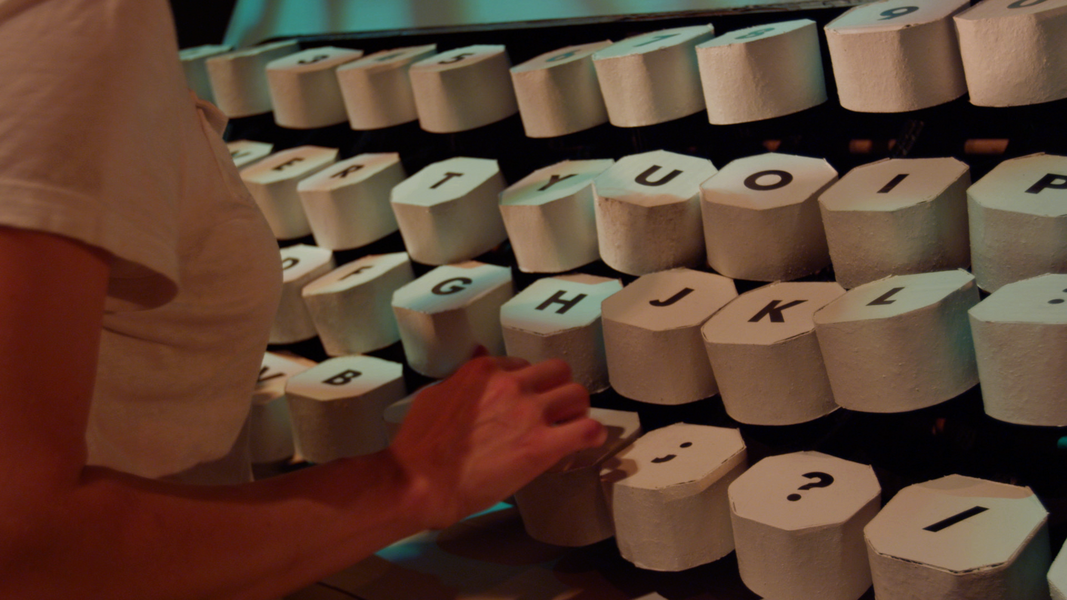 Typing; the first scene, an operatic journal entryThe opening scene is composed of the scientist’s typed journal entry which has been transformed into a musical instrument. The altered typing is accompanied by an antique toy piano and Berg-like vocal punctuations so that the entirety feels like a circuit bent atonal opera. I created the music withfound and created bird, insect and other jungle sounds against an amplified typewriter. What becomes clear is an encroaching madness and reluctance to leave the sheer terror of thousands of square miles of rapid life and death.
Typing; the first scene, an operatic journal entryThe opening scene is composed of the scientist’s typed journal entry which has been transformed into a musical instrument. The altered typing is accompanied by an antique toy piano and Berg-like vocal punctuations so that the entirety feels like a circuit bent atonal opera. I created the music withfound and created bird, insect and other jungle sounds against an amplified typewriter. What becomes clear is an encroaching madness and reluctance to leave the sheer terror of thousands of square miles of rapid life and death. -
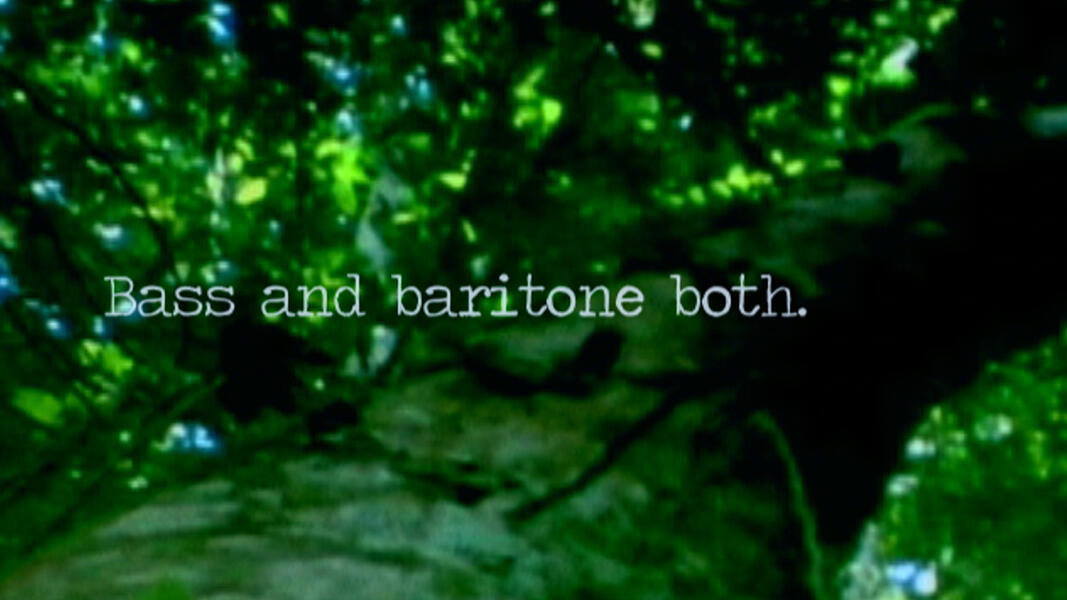 Bass and Baritone; The journal writ largeA still from the first scene of In The Jungle. The scientist types in her journal about the trip she will take back to 'civilization'. The words are typed upon the flora of jungle as the sound track, an atonal opera composed of the found and constructed sounds of birds and insects and typewriter keys, reaches a peak of frustration and ridiculousness. As with much of my work the language is both a conceptual and visual element of the composition.
Bass and Baritone; The journal writ largeA still from the first scene of In The Jungle. The scientist types in her journal about the trip she will take back to 'civilization'. The words are typed upon the flora of jungle as the sound track, an atonal opera composed of the found and constructed sounds of birds and insects and typewriter keys, reaches a peak of frustration and ridiculousness. As with much of my work the language is both a conceptual and visual element of the composition. -
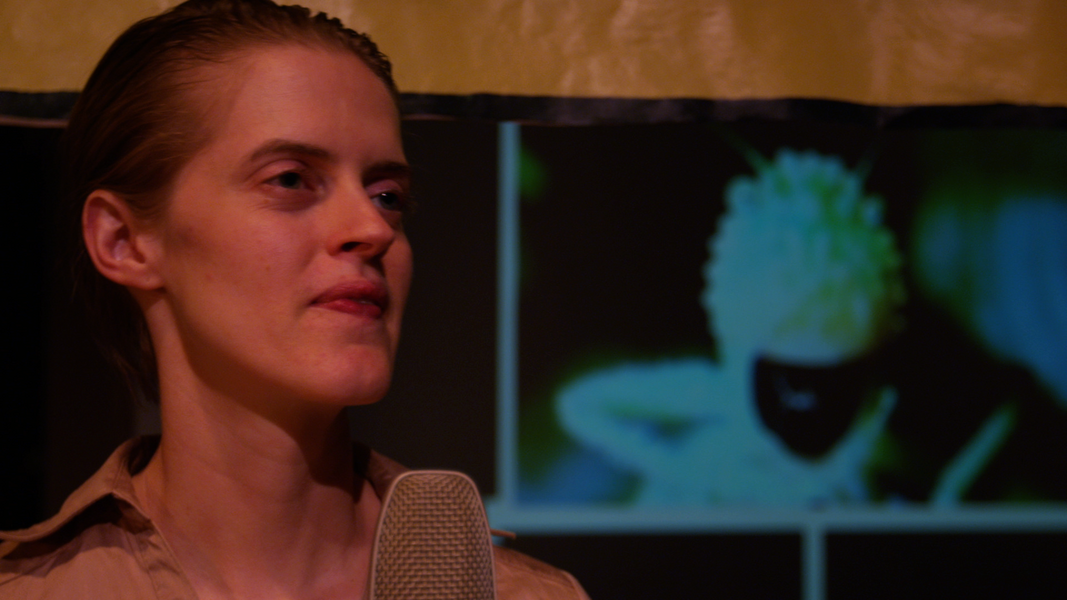 The scientist delivers a lecture; the second scene; the role of The Scientist is played by Cricket ArrisonThe scientist delivers a lecture to her granting committee on her work studying the way jungle flora expresses sorrow.
The scientist delivers a lecture; the second scene; the role of The Scientist is played by Cricket ArrisonThe scientist delivers a lecture to her granting committee on her work studying the way jungle flora expresses sorrow. -
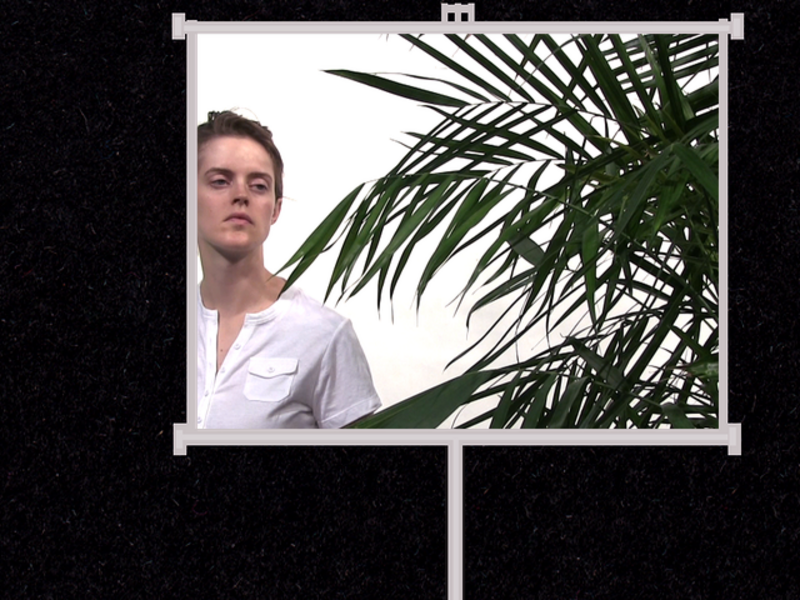 the slide showThe scientist delivers a lecture to her granting committee on her work studying the way jungle flora expresses sorrow.
the slide showThe scientist delivers a lecture to her granting committee on her work studying the way jungle flora expresses sorrow. -
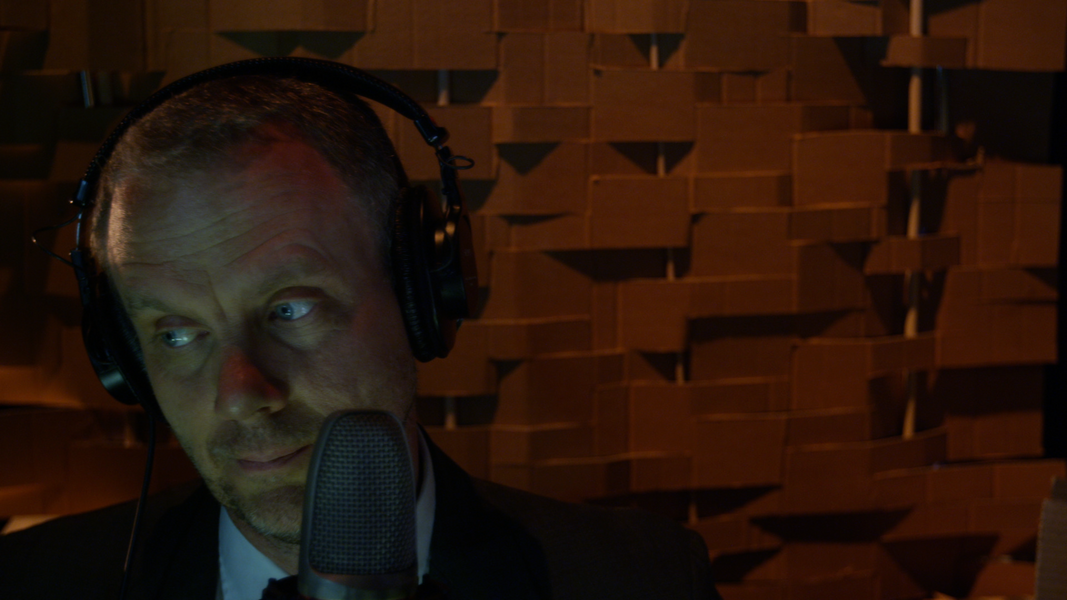 The role of The DJ is played by M.C. SchmidtWhen the scientist returns to the jungle after delivering her lecture, she is just in time to listen to her favorite radio show on WJNG. The show provides the courage and fortification of a direct god line to the jungle floor through a mellifluous dj and prescient pop songs.
The role of The DJ is played by M.C. SchmidtWhen the scientist returns to the jungle after delivering her lecture, she is just in time to listen to her favorite radio show on WJNG. The show provides the courage and fortification of a direct god line to the jungle floor through a mellifluous dj and prescient pop songs. -
 snakesThe scientist listens to the radio show with a number of snakes.
snakesThe scientist listens to the radio show with a number of snakes. -
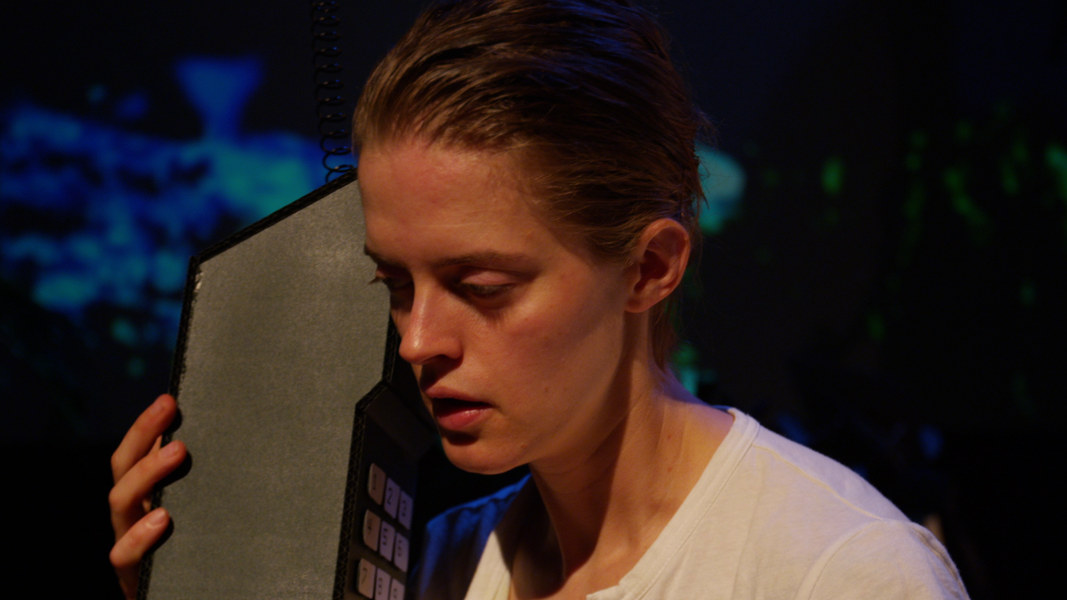 Radio Call InThe Scientist is able to call in to the radio program and speak a bit to The DJ and request a song.
Radio Call InThe Scientist is able to call in to the radio program and speak a bit to The DJ and request a song. -
“Radio Request” excerpt from In The JungleThis is an excerpt from the last scene of the feature length video In The Jungle. The Scientist has returned to the jungle after delivering her lecture just in time to listen to her favorite radio station where The DJ serves as an alternately sardonic and consoling god-like presence through the jungle ether and radio waves. The ideas are expressed here through The DJ's ruminations on fear and the language of the pop songs he shares with his listening audience. In this 4 minute excerpt the scientist is able to call in a request and speak for a moment to The DJ about her experience of fear and loneliness. As a child, radio–both the real object and the concept of that connection–was a true pleasure and salvation to me; something magical which stands in contrast today to the individualized presence of the internet. The radio sat between choice and a lack of choice, which seems like a very fine metaphor for our trying days on this planet.
-
 The AudienceBetween the three acts the sets of the scenes are changed by stage hands who serve as dancers, visible & choreographed. As the stage hands change the sets the camera does a 5 minute 360 degree pan and tilt around the theatre and reveals that the entirety of the film is a theatre piece with a live audience.
The AudienceBetween the three acts the sets of the scenes are changed by stage hands who serve as dancers, visible & choreographed. As the stage hands change the sets the camera does a 5 minute 360 degree pan and tilt around the theatre and reveals that the entirety of the film is a theatre piece with a live audience.
3 peonies 2017
What becomes apparent is the humor possible in material interactions and the tender and sometimes melodramatic symbolism of cut flowers. What begins as a reverence for natural beauty ends up pointing towards the abstract expressionism and color field work of high modernism which, in many cases eschewed the banality of such ‘natural’ beauty. The collaged soundtrack suggests weightier concerns, gently insistent behind the flatness of the utilitarian sounds of ripping tape.
While the last 7 years I have been creating feature films and book length writing--expanding my notions of time--these short, experimental, poetic film and video work have been a mainstay of my artistic practice and I have and will continue to, create these more condensed pieces throughout my life.
Has screened at Media City Film Festival, Windsor/Detroit 2018; Image Contre Nature 18, Marseille, France 2018; European Media Arts Festival Osnabrück, Germany 2018; IndieLisboa, Portugal 2018; Cue Mark Lubov Gallery, NYC 2017; Antimatter Film Festival, Victoria BC 2017 and Fracto Film Experience, Berlin, Germany; Light Field Festival, San Francisco CA; Cosmic Rays Festival, Chapel Hill NC; RPM Film Festival, Boston MA; KLEX, Kuala Lumpur, Malaysia; Compressed Air: Recent Experimental Film Rice Media Center, Texas; Verbeke Foundation, Ghent, Belgium; Media City, Ontario, CA; Girona Film Festival, Spain; Image Contre Nature 18, Marseille, France; Hong Kong Arthouse Film Festival; Altan Khalis Independent Film Festival, Mongolia; San Francisco International Film Festival at BAMPFA, CA; “Projections” at New York Film Festival, NY, NY
Critic Michael Sicinski wrote "The film consists of a three-minute action, but Barber's framing and use of contrapuntal sound (together with the repetitive rip of the tape) organizes this performative gesture into a fully cinematic object, one with a full painterly palette. This is a tough, smart little film." https://letterboxd.com/msicism/film/3-peonies/
-
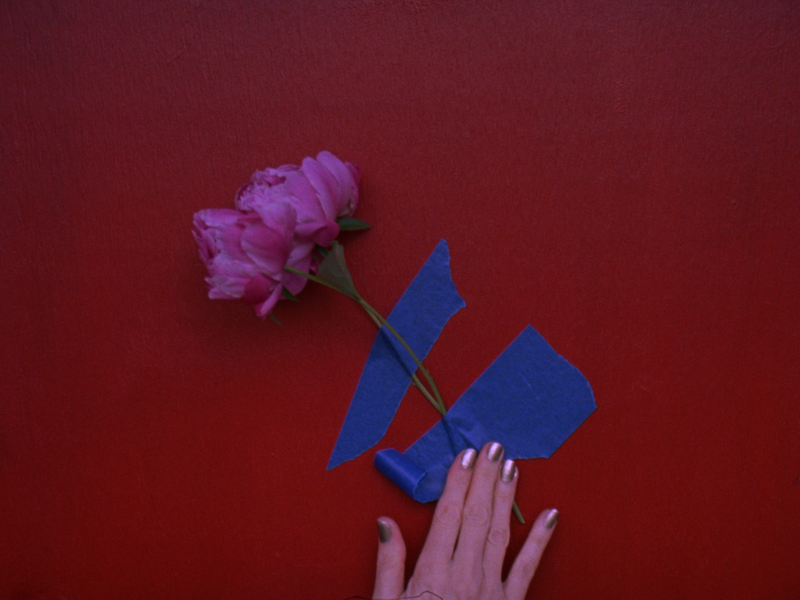 3 peonies still 1.pngA short, poetic 16mm film from 2017. Three peonies are taped to a red ground until entirely covered with blue painters tape. What begins as a portrait of flowers, a nod to the beauty and delicacy so lauded in Dutch floral painting, turns to a piece reminiscent of modernist painters as the tape covers the stems and buds of the flowers. This is a film which is playing at being a sculpture.
3 peonies still 1.pngA short, poetic 16mm film from 2017. Three peonies are taped to a red ground until entirely covered with blue painters tape. What begins as a portrait of flowers, a nod to the beauty and delicacy so lauded in Dutch floral painting, turns to a piece reminiscent of modernist painters as the tape covers the stems and buds of the flowers. This is a film which is playing at being a sculpture. -
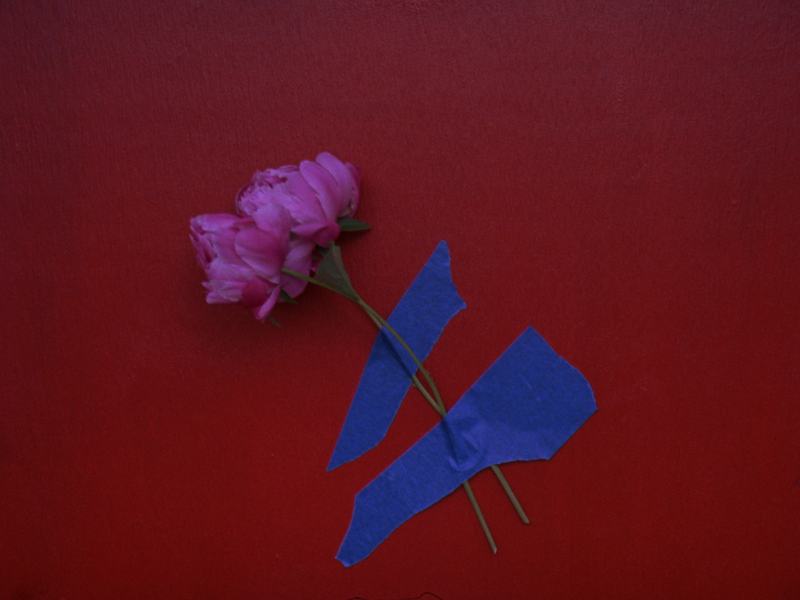 3 peonies still 2.pngA short, poetic 16mm film from 2017. Three peonies are taped to a red ground until entirely covered with blue painters tape. What begins as a portrait of flowers, a nod to the beauty and delicacy so lauded in Dutch floral painting, turns to a piece reminiscent of modernist painters as the tape covers the stems and buds of the flowers. This is a film which is playing at being a sculpture.
3 peonies still 2.pngA short, poetic 16mm film from 2017. Three peonies are taped to a red ground until entirely covered with blue painters tape. What begins as a portrait of flowers, a nod to the beauty and delicacy so lauded in Dutch floral painting, turns to a piece reminiscent of modernist painters as the tape covers the stems and buds of the flowers. This is a film which is playing at being a sculpture. -
short excerpt from 2017 16mm film 3 Peonies by Stephanie BarberA small introduction to this already quotidian 16mm film, 2017, Stephanie Barber. What becomes apparent is the humor possible in material interactions and the tender and sometimes melodramatic symbolism of cut flowers. What begins as a reverence for natural beauty ends up pointing towards the abstract expressionism and color field work of high modernism which, in many cases eschewed the banality of such ‘natural’ beauty. The collaged soundtrack suggests weightier concerns, gently insistent behind the flatness of the utilitarian sounds of ripping tape.
DAREDEVILS 2013
HD 85minutes
This feature film premiered October, 2013 at New York Film Festival's Views from the Avant-Garde.
A portrait of risk and language, the experimental narrative DAREDEVILS, presents a writer as she interviews a well-known artist and feels the reverberations of their discussion throughout her day. Visually spare, still and verbose, the video considers three formal handlings of language—a dialog, two monologues and a song.
Starring KimSu Theiler, Flora Coker & Adam Robinson and featuring the voices of Susan Howe and Jenny Graf, DAREDEVILS constructs a metaphor of an artist’s life and work as daredevilry.
The piece sits gently between video art, narrative and poetic essay. The classic rising action, climax and denouement are sculpted, not by cause and effect, but by the subtle movements to and from understanding that are inherent in conversation. Bubbles of intimacy are blown and popped, begin to be blown again.
website: http://daredevilsmovie.com/
-
DAREDEVILS trailerThe trailer for the new feature DAREDEVILS written and directed by Stephanie Barber.
-
 DAREDEVILS still, interview sceneActor Flora Coker plays an artist who is interviewed by a writer played by KimSu Theiler.
DAREDEVILS still, interview sceneActor Flora Coker plays an artist who is interviewed by a writer played by KimSu Theiler. -
EXCERPT FROM DAREDEVILS INTERVIEW SCENEThis is a short excerpt from the first scene of DAREDEVILS. The Writer, played by KimSu Theiler, interviews the fictional artist played by Flora Coker about her work and life and ideas. The script is carefully constructed to suggest an initial awkwardness as the conversation begins, and then move to the traditional question/answer format of an interview to moments of natural conversational exchanges to an abrupt ending.
-
 DAREDEVILS still, jogging sceneActor KimSu Theiler in the jogging scene. This second scene, after the interview, watches The Writer jog while listening to a podcast interview with a daredevil and hollywood stunt actor.
DAREDEVILS still, jogging sceneActor KimSu Theiler in the jogging scene. This second scene, after the interview, watches The Writer jog while listening to a podcast interview with a daredevil and hollywood stunt actor. -
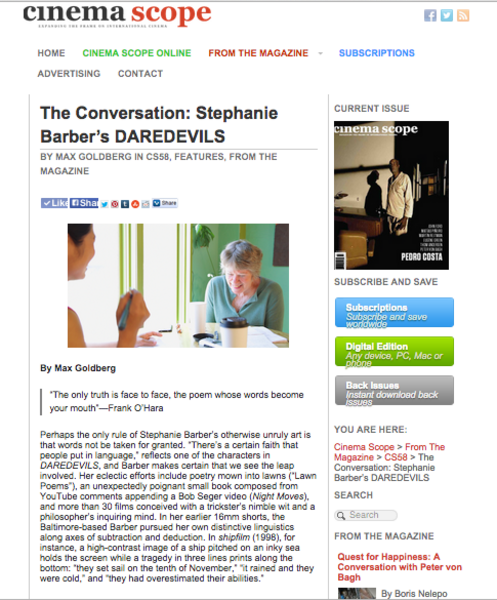 DAREDEVILS reviewed at Cinema Scope Magazinehttp://cinema-scope.com/features/conversation-stephanie-barbers-daredevils/
DAREDEVILS reviewed at Cinema Scope Magazinehttp://cinema-scope.com/features/conversation-stephanie-barbers-daredevils/ -
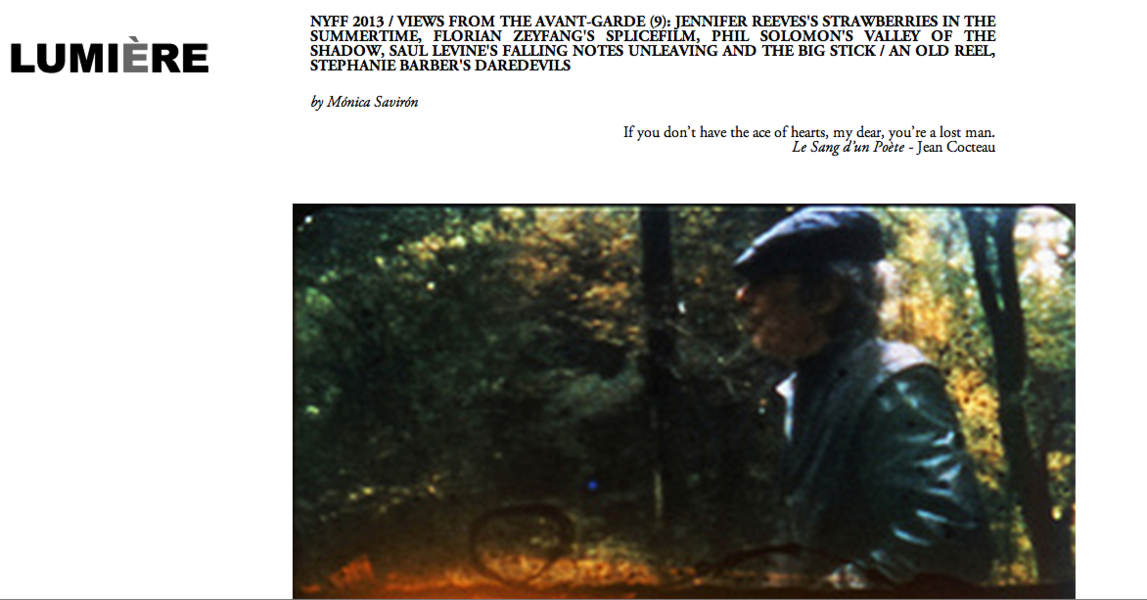 NYFF, Views from the Avant-Garde ReviewsReview of DAREDEVILS Nov. 2013, at Lumiere Magazine http://www.elumiere.net/exclusivo_web/nyff13/nyff13_09.php
NYFF, Views from the Avant-Garde ReviewsReview of DAREDEVILS Nov. 2013, at Lumiere Magazine http://www.elumiere.net/exclusivo_web/nyff13/nyff13_09.php -
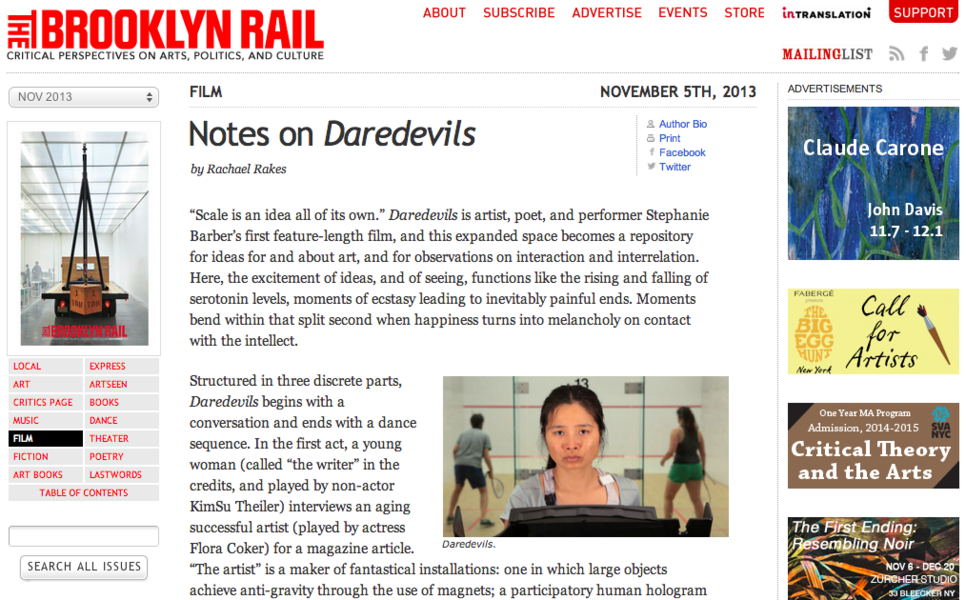 Notes on DaredevilsReview of DAREDEVILS at The Brooklyn Rail, Nov. 2013 http://www.brooklynrail.org/2013/11/film/notes-on-daredevils
Notes on DaredevilsReview of DAREDEVILS at The Brooklyn Rail, Nov. 2013 http://www.brooklynrail.org/2013/11/film/notes-on-daredevils -
 shooting actor Adam Robinson as 'The Musician' in DAREDEVILSDirector Stephanie Barber setting up one of the recording scenes in which Adam Robinson plays the role of a musician recording the sounds of branches, logs, rocks and leaves.
shooting actor Adam Robinson as 'The Musician' in DAREDEVILSDirector Stephanie Barber setting up one of the recording scenes in which Adam Robinson plays the role of a musician recording the sounds of branches, logs, rocks and leaves. -
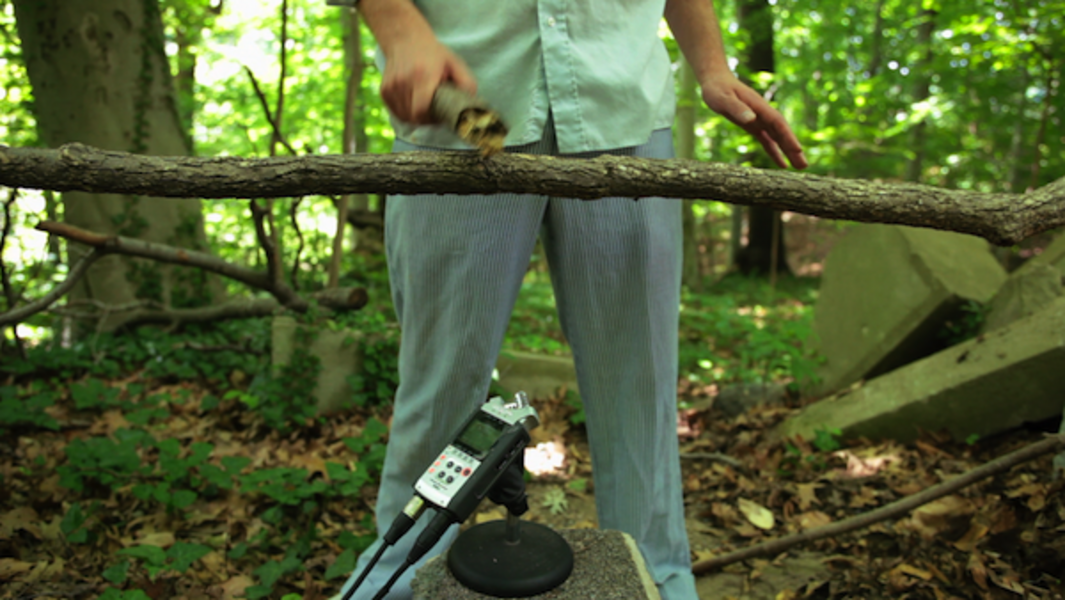 DAREDEVILS still, woods recordingActor Adam Robinson, whose character is in the woods recording sounds for a song his character composes. These recording scenes are sprinkled throughout the film and interrupt the 3 main scenes.
DAREDEVILS still, woods recordingActor Adam Robinson, whose character is in the woods recording sounds for a song his character composes. These recording scenes are sprinkled throughout the film and interrupt the 3 main scenes. -
 DAREDEVILS still, dance sceneActor Kimsu Theiler in final dance scene of DAREDEVILS. The writer, played by KimSu Theiler, returns home after a long day and dances in the backyard. Her dance moves between silly and sublime, sorrowful and joyful. After jogging The Writer returns home where The Musician is recording the vocal track for a song he has made with his recordings in the woods. “Hey birds, will you all fly away? Hey birds, will you all fly away? or just nestle, further down nestle further down?...” The song is repetitive and contemplative and The Writer watches him sing for a short while and then goes into the back yard (where the music changes from diegetic to non-diegetic) and dances a dance of wonder, futility, joy, sorrow & surrender on the nighttime lawn of an American home.
DAREDEVILS still, dance sceneActor Kimsu Theiler in final dance scene of DAREDEVILS. The writer, played by KimSu Theiler, returns home after a long day and dances in the backyard. Her dance moves between silly and sublime, sorrowful and joyful. After jogging The Writer returns home where The Musician is recording the vocal track for a song he has made with his recordings in the woods. “Hey birds, will you all fly away? Hey birds, will you all fly away? or just nestle, further down nestle further down?...” The song is repetitive and contemplative and The Writer watches him sing for a short while and then goes into the back yard (where the music changes from diegetic to non-diegetic) and dances a dance of wonder, futility, joy, sorrow & surrender on the nighttime lawn of an American home.
Night Moves 2013
The book is a collection of thoughts and conversations about Bob Seger's classic song of the same name, all culled from YouTube.
Poignant, disturbing and incisive, the collection deepens and takes on a cultural significance beyond the initial artistic impetus. A collaboration is created—twisting through the nostalgia for youth and the collective ownership of pop music, the book becomes a moving document of how strangers communicate about art, and what the song and the sentiment of the song means to different people.
Carl Wilson at Slate Magazine wrote "It’s in these alternations between poignancy and repugnance, the tender and the foul-mouthed, the clichés and the arresting confessions, separated by bubbles of white space, that Barber discovers the poetry of the comment section. Her gesture here goes back, of course, to Marcel Duchamp and all the conceptual art since that has been produced by putting a frame around a found object. (She often collages found images into her video work as well.)" about Night Moves.
Blake Butler at Vice Magazine wrote "The anonymous and wide-open freedom, when orchestrated under independent Baltimore filmmaker Stephanie Barber’s eye, quickly culminates into a narrative built from sentimental dedications, troll-bait insults, wistful old folks angry over how music has changed, defensive teens, lurkers, hornballs, the incredulous, the sincere, and a whole other range of personalities that would only intersect with one another online."
-
 Night Moves by Stephanie BarberPublished by Publishing Genius Press in February 2013.
Night Moves by Stephanie BarberPublished by Publishing Genius Press in February 2013. -
 Stephanie Barber interviewed by Mike Pesca about her book Night Moves.Oct. 14, 2014, Stephanie Barber interviewed by Mike Pesca at The Gist. listen here: https://soundcloud.com/thegist/working-on-our-night-moves-2 Book interview begins at 11'45"
Stephanie Barber interviewed by Mike Pesca about her book Night Moves.Oct. 14, 2014, Stephanie Barber interviewed by Mike Pesca at The Gist. listen here: https://soundcloud.com/thegist/working-on-our-night-moves-2 Book interview begins at 11'45" -
 Night Moves reviewed at Los Angeles Review of BooksGina Vaynshteyn reviews Night Moves at Los Angeles Review of Books, July 2013.
Night Moves reviewed at Los Angeles Review of BooksGina Vaynshteyn reviews Night Moves at Los Angeles Review of Books, July 2013. -
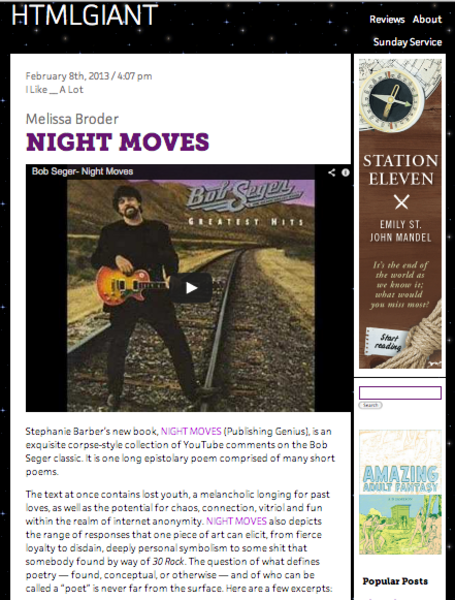 Night Moves reviewed at HTMLGiantNight Moves reviewed by Melissa Broder at HTMLGiant
Night Moves reviewed at HTMLGiantNight Moves reviewed by Melissa Broder at HTMLGiant -
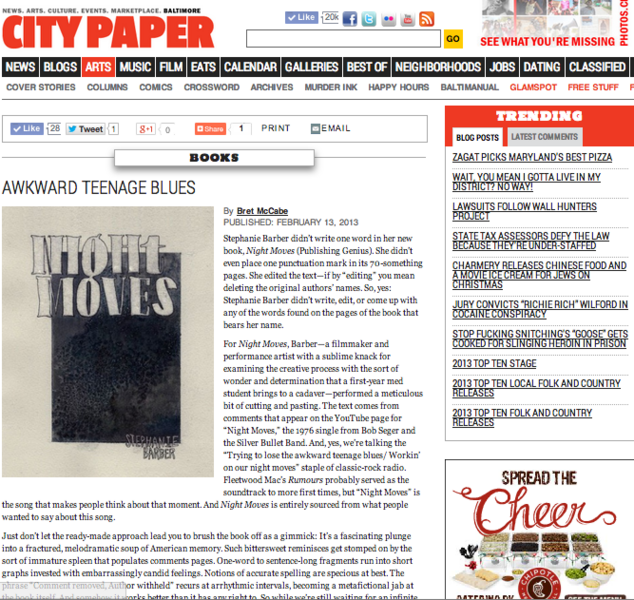 Night Moves reviewed at City PaperBret McCabe reviews Night Moves at the Baltimore City Paper.
Night Moves reviewed at City PaperBret McCabe reviews Night Moves at the Baltimore City Paper. -
 Night Moves review from Vice MagazineBlake Butler reviews 3 conceptual books released in 2013 at Vice Magazine. http://www.vice.com/read/conceptual-gender-violence-murder-and-bob-seger
Night Moves review from Vice MagazineBlake Butler reviews 3 conceptual books released in 2013 at Vice Magazine. http://www.vice.com/read/conceptual-gender-violence-murder-and-bob-seger -
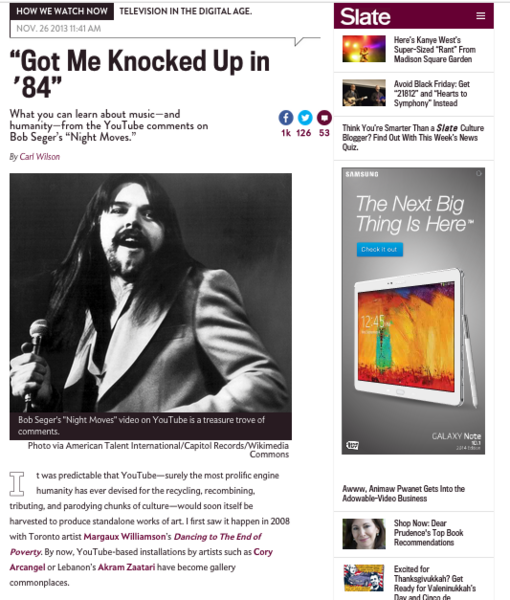 Night Moves reviewed at Slate MagazineCarl Wilson reviews Night Moves at Slate Magazine. Nov. 2013.
Night Moves reviewed at Slate MagazineCarl Wilson reviews Night Moves at Slate Magazine. Nov. 2013. -
 2 pages- Night Moves.jpeg2 pages from the conceptual book Night Moves.Night Moves is recognition and celebration of a very ubiquitous collaborative critical inquiry that is happening on YouTube or any online community where people share and comment and discuss in a public way. It is a recognition and celebration of the very tenuous (at turns beautiful or cruel) nature of democratic discourse with all its wonders and perversions on display.
2 pages- Night Moves.jpeg2 pages from the conceptual book Night Moves.Night Moves is recognition and celebration of a very ubiquitous collaborative critical inquiry that is happening on YouTube or any online community where people share and comment and discuss in a public way. It is a recognition and celebration of the very tenuous (at turns beautiful or cruel) nature of democratic discourse with all its wonders and perversions on display.
jhana and the rats of james olds or 31 days/31 videos 2011
Between June 25th-Aug. 7th 2011 Stephanie Barber moved her studio into the Baltimore Museum of Art where she created a new video each day in a central gallery open to museum visitors.
Jhana is a meditative state and James Olds is the protoneuroscientist who discovered the pleasure or reward center of the human brain by doing experiments on rats.
The goal of this project, entitled jhana and the rats of james olds or 31 days/31 videos, was to create a series of short, poetic videos in the playful and serious footprints of Oulipo games and daily meditations; creating one new video each day. The exhibit was both a constantly changing installation as well as a collaborative performance in which museum visitors were present as spectator and often creative partner. Each of these videos was created on one of the exhibition days.
"I am thinking about the emphasis given to product over production, or display over creation. The piece is a video screening and an installation and a performance; a spiritual obeisance, an athletic braggadocio, a consideration of marxist theories of production (with the assembly line so lovingly lit). It is a funny game for me to play, an exercise in concentration, discipline and focus, an extension of my everyday. It is a greedy desire to squeeze a massive amount of work out of myself; a dare; a show I would like to see myself. It is like the back story before the story, an inversion of the way we usually experience art work. A moving from the inside out.
I was thinking how the interiors of museums are really only able to share what is almost the exterior of a piece of art work, and though this colliding of the interior and exterior is fuzzy, a step towards the interior of any art piece might be the making of that piece. I'm interested in the tedious and repetitive qualities of meditation and art work, the difference and similarities in these two practices. The practice and work of these practices??the dispelling of the so-seductive myth of artist as creating through a vague and florid explosion of inspiration??or perhaps interested in romanticizing the effort and challenging technical, logistical, practical elements of creation. The tedious as IT. Or one of the ITs. Like all pieces of art, this project is accordion in its intentions, shrinking and expanding upon use." Stephanie Barber
Press on jhana and the rats of james olds can be found here:
http://www.poetryfoundation.org/harriet/2011/07/a-film-a-day-for-sondheim-prize-finalist-stephanie-barber-at-the-baltimore-museum-of-art/
http://citypaper.com/arts/visualart/finalist-words-1.1171218
http://thefastertimes.com/writersonwriting/2011/07/13/almost-everyone-is-ready-stephanie-barber/
http://htmlgiant.com/author-spotlight/stephanie-barber-works-at-a-museum/
http://www.examiner.com/arts-in-baltimore/poetry-of-the-sondheim-artscape-prize-at-the-bma
http://publishinggenius.blogspot.com/
http://www.washingtonpost.com/gog/exhibits/sondheim-artscape-prize-2011-finalists,1209266/critic-review.html
http://charmcitycurrent.com/bolger/2011/07/08/sondheim-artscape-prize-exhibition-a-work-in-progress/
http://www.baltimorefishbowl.com/stories/be-a-part-of-art-with-stephanie-barbers-31-days-31-videos/
-
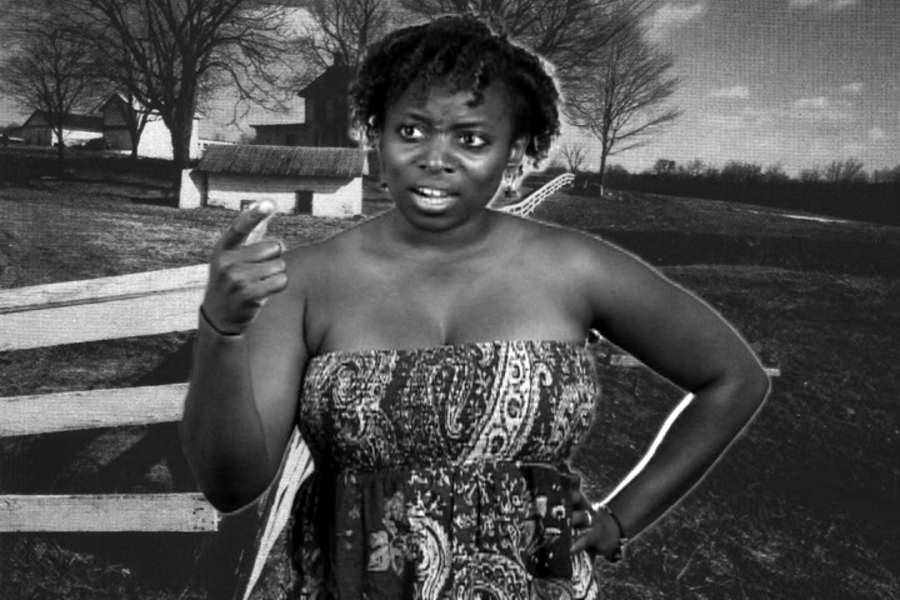 still from The Party
still from The Party -
(small piece of) I LOVE YOUThis is a short excerpt from a 50 minute film in which 689 people say "I Love You" one after another. All the people in the piece were passing through the exhibit and agreed to be in this piece.
-
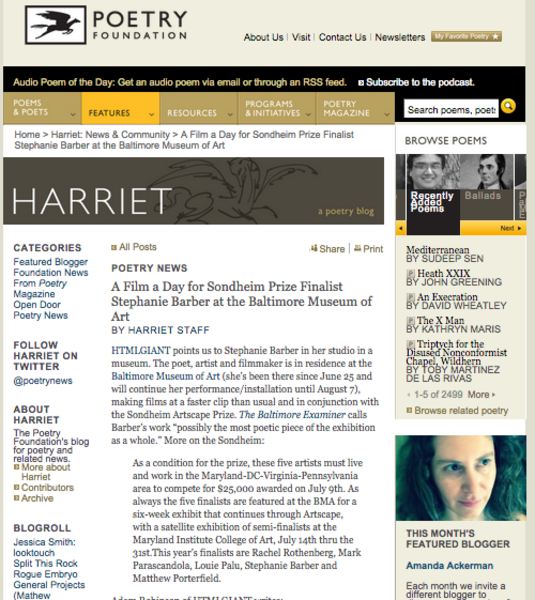 jhana and the rats of james olds written about at The National Poetry Foundation blog Harrietjhana and the rats of james olds written about at The National Poetry Foundation blog Harriet
jhana and the rats of james olds written about at The National Poetry Foundation blog Harrietjhana and the rats of james olds written about at The National Poetry Foundation blog Harriet -
miniaturesStephanie Barber | U.S. | 2011 | 2m color | sound | DV from Jhana and the Rats of James Olds A series of sentences read by museum visitors inspired by, and paired with, a number of miniature Elizabethan portraits. Words and paintings??each seem equally able and unable to represent a life. The man who reads the line ?I think constantly about my coming demise? came through the exhibition several times and participated in a few different pieces. He is big, young, strong and confident. I had him read the line many times before he got it just right. I think it was hard for him to imagine a worry of this sort.?Stephanie Barber
-
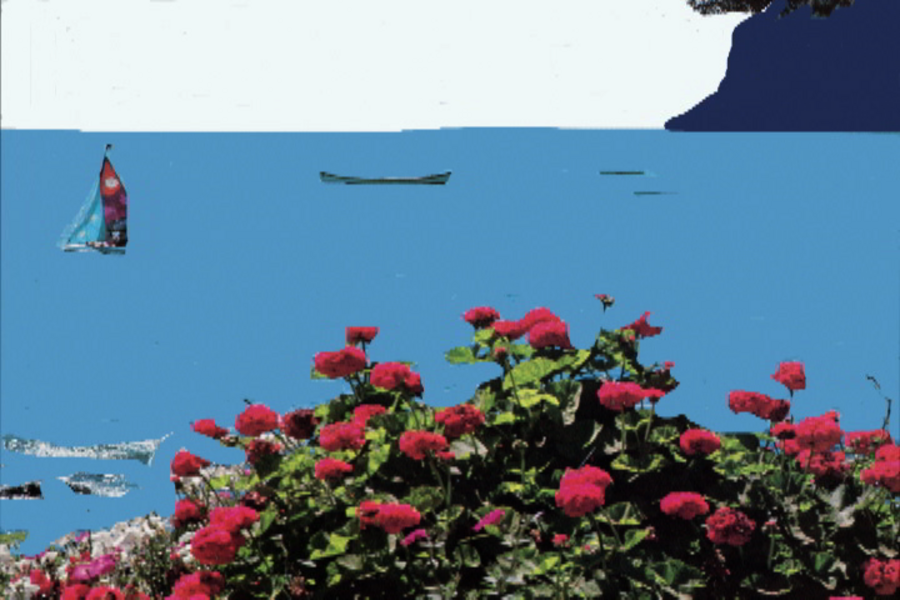 at-the-shore.png
at-the-shore.png -
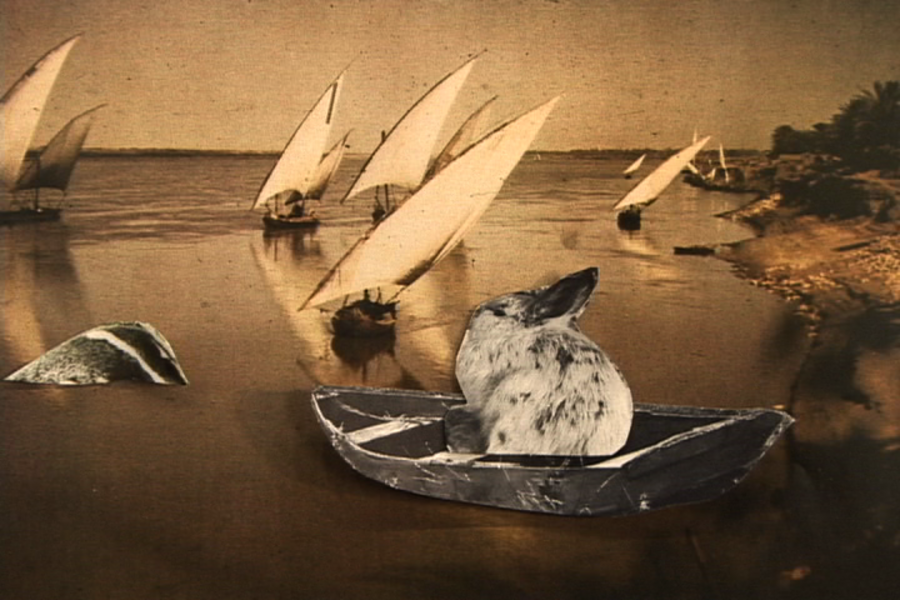 still from The Badger and The HareA musical telling of an old chinese myth. Made in collaboration with Smelling Salt Amusements.
still from The Badger and The HareA musical telling of an old chinese myth. Made in collaboration with Smelling Salt Amusements. -
DEGAS from Jhana and the Rats of James OldsDEGAS from Jhana and the Rats of James Olds 1 min / digital / sound / 2011 It is not only that his first and last names are near anagrams of each other or that his paintings of horses are paintings of motion reorganized to suggest docility and submission, earth toned to make the colored silks of riders pop. There is more about Degas that gives us pleasure. More than Degas I am continually fascinated by what passes for biography–a timeline; a portrait; a solemn or inane anecdote. These all seem equally plausible. Like all the pieces I made for Jhana and the Rats of James Olds this piece was read by a woman who came into the museum unaware that she would help me finish and become a part of my work that day. Between June 25th-Aug. 7th 2011 Stephanie Barber moved her studio into the Baltimore Museum of Art where she created a new video each day in a central gallery open to museum visitors.
-
Some Animals from Jhana and the Rats of James Oldsh.264SOME ANIMALS from Jhana and the Rats of James Olds is a song created by the presence or absence of these images of animals. The patterning of sound sound sound repeating like the shapes which make a giraffe's coat or the molecules of steam which flow from the bison's broad nose as he exhales the scent of a wildflower. Between June 25th-Aug. 7th 2011 Stephanie Barber moved her studio into the Baltimore Museum of Art where she created a new video each day in a central gallery open to museum visitors. The goal of this project, entitled jhana and the rats of james olds or 31 days/31 videos, was to create a series of short, poetic videos in the playful and serious footprints of Oulipo games and daily meditations; creating one new video each day. The exhibit was both a constantly changing installation as well as a collaborative performance in which museum visitors were present as spectator and often creative partner.
-
the eclipse from jhana and the rats of james oldsTHE ECLIPSE Stephanie Barber | U.S. | 2011 | 2m | b&w | silent | DV from Jhana and the Rats of James Olds The solar eclipse of May 28 in 1900 is part of the Saros Cycle 126. It was, as all eclipses are, not a result of any more or less motion but an expected interruption along our usual path. A shading that reminds us that we are moving and that other celestial objects are moving also.
-
at the baths from jhana and the rats of james olds

